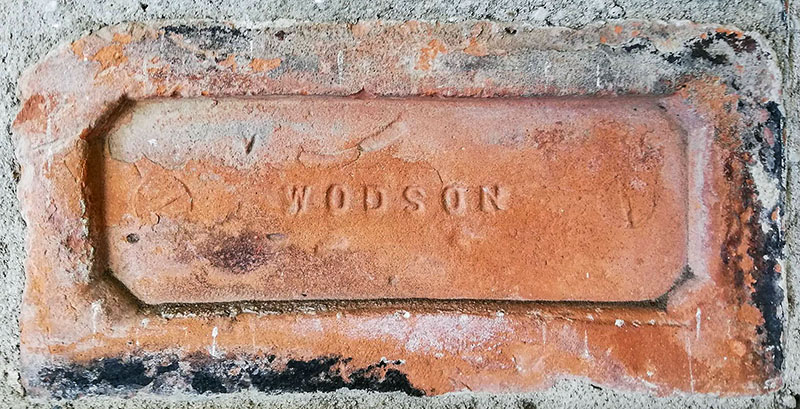

William George Wodson was a stationer turned builder who migrated to brick manufacture at Heaton Points Brickworks. In 1881 he was a brick manufacturer employing 8 men, 3 boys and 1 girl. He is listed in a trade directory for 1883 as a brick manufacturer at Heaton, Newcastle on Tyne. In 1886 he applied for a patent for "An improved case kiln for the burning of all classes of bricks and other clay goods." After an unsuccessful attempt to convert the business to a public limited company it failed in July 1886 when the stock, materials, tool and book debts of W G Wodson, Son, and Company were auctioned. The partners were W G Wodson, T W Wodson, and Thomas H Watson. Photo by Chris Tilney.
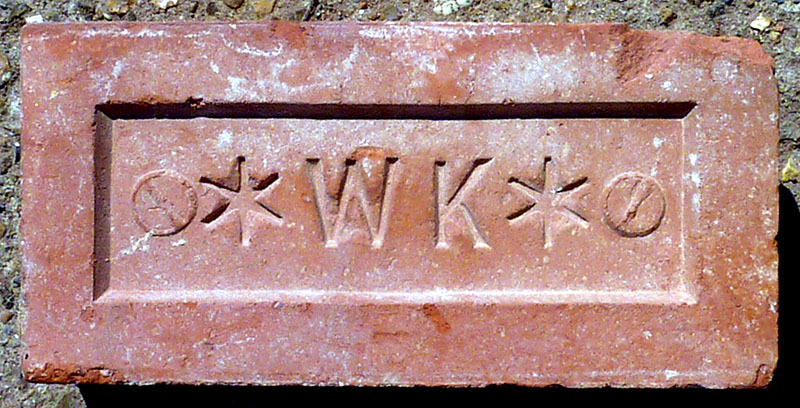
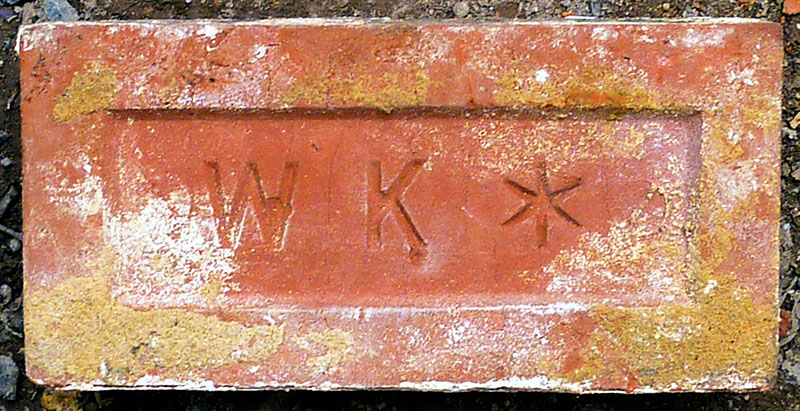
Wokingham Brickworks (WK) was owned by Thomas Lawrence. Originally he worked as a Draper in Binfield, Berkshire and by 1865, he owned a large department store in Bracknell High Street selling everything from food to ironmongery. From 1893 his company owned several brickworks at Bracknell, Swinley, Easthampstead, Pinewood, Wokingham and Warfield. His bricks have been used in the building of the Albert Hall, Westminster Cathedral and in restoration work at 10 Downing Street and Hampton Court Palace. Photos and info by Martyn Fretwell. Also see entry for Thomas Lawrence of Bracknell (TLB).
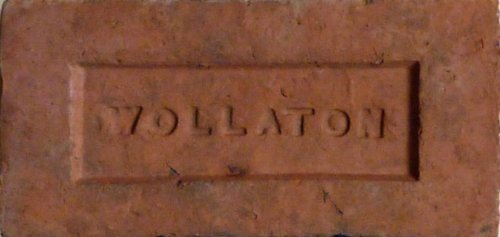
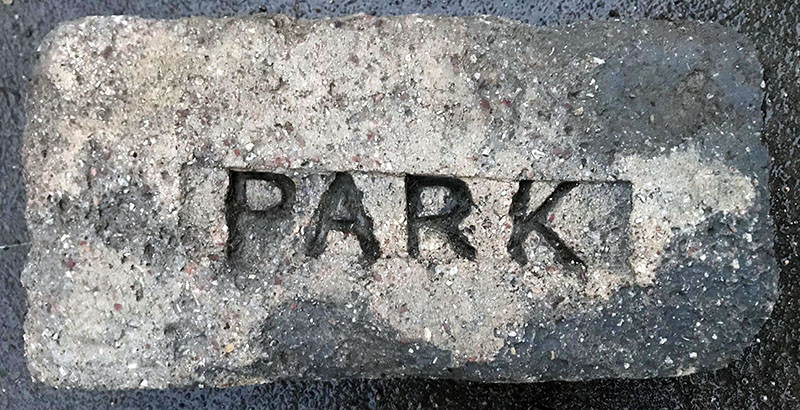
Photo by Steven Tait.
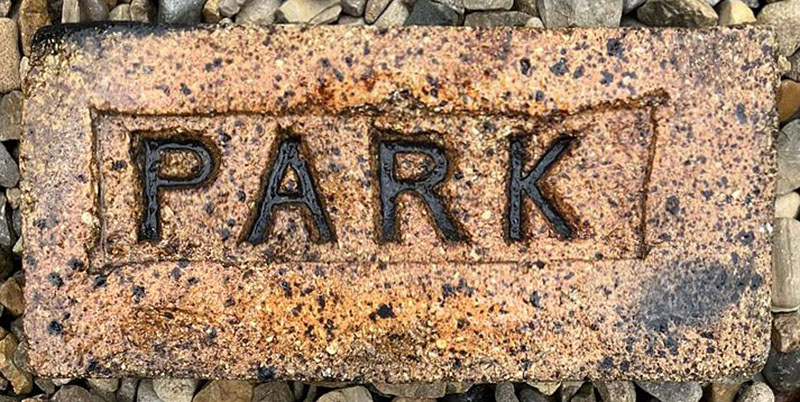
Photo by Neville Akers.
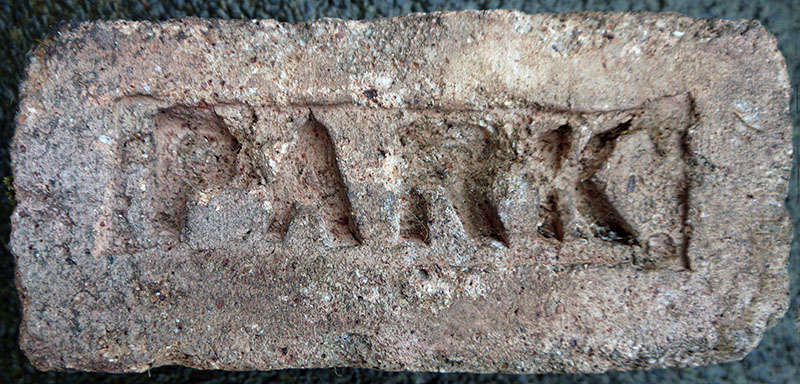
The Wolsingham Park & Dinas Firebrick, Mineral & Coal Co. was registered Sept 1873. Found in an old quarry near Waskerley. The works, which was situated near the site of the Salter's Gate Station on the Benfieldside Branch of the North-Eastern Railway, was advertised for sale in September 1877 due to the insolvency of the business. Photo and info by Dave Liddle.
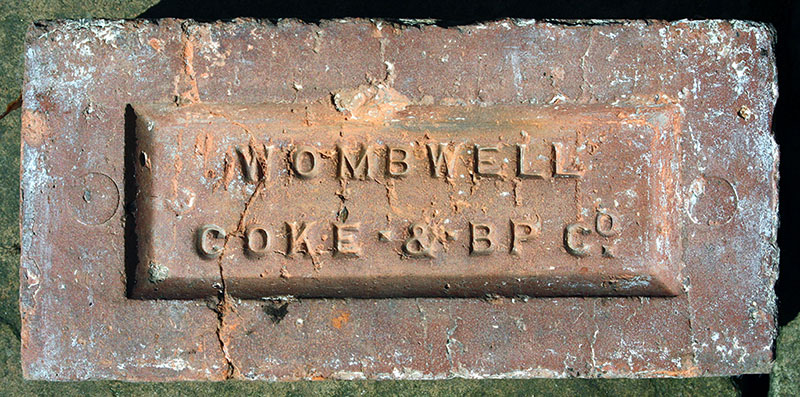
The Wombwell Coke and By-Product Company Ltd was founded in 1919 to run the new coking plant at Wombwell Main Colliery which ran until 1936. The brickworks was also transferred to this business from the colliery company. Photo by David Kitching.
Wombwell Main Colliery Brickworks, Wombwell, Barnsley.
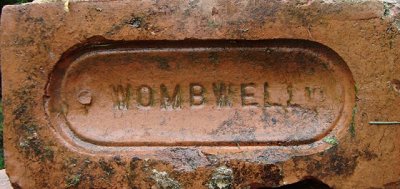
Photo by Simon Patterson
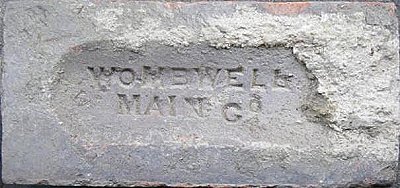
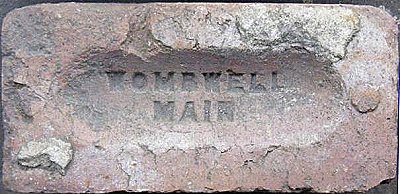
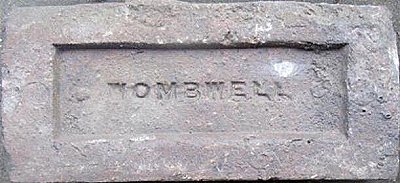
Thanks to Stuart for the above photos.
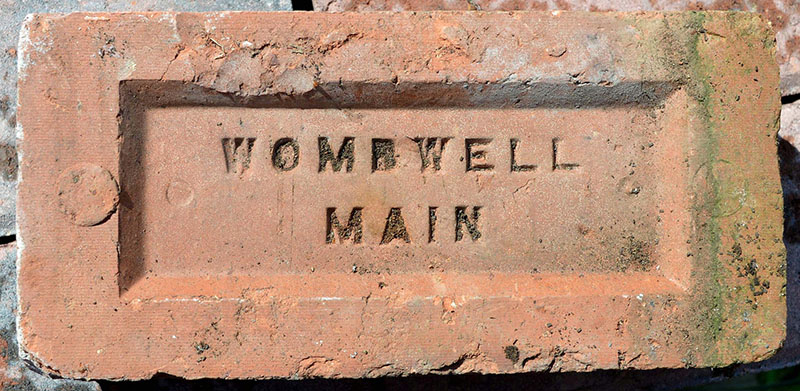
Wombwell Main Colliery was established by The Wombwell Main Co. in 1865 and became the property of the National Coal Board when it was nationalised in 1947. The associated brickworks seems to have been operated by The Wombwell Main Co. and The Wombwell Coke & BP Co. prior to nationalisation and by the National Coal Board and the Midland Brick Co. (on behalf of the NCB) after nationalisation. Info and photo by Frank Lawson.
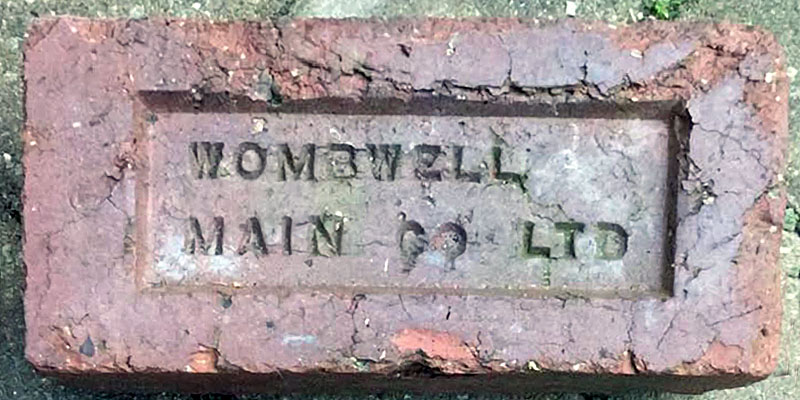
Photo by Keith Whitaker courtesy of the Friends of Hemngfield Colliery.
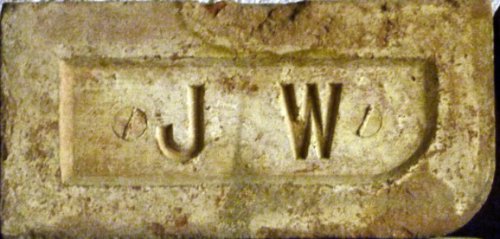
.jpg)
2.jpg)
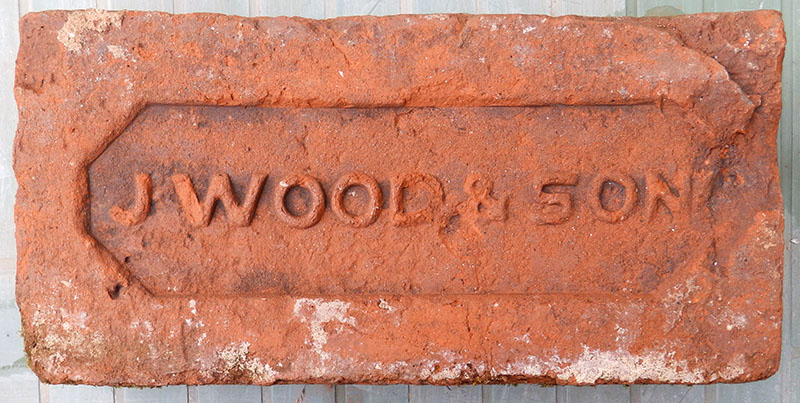
Seen at Cawarden Reclamation. Photo by Nigel Furniss.
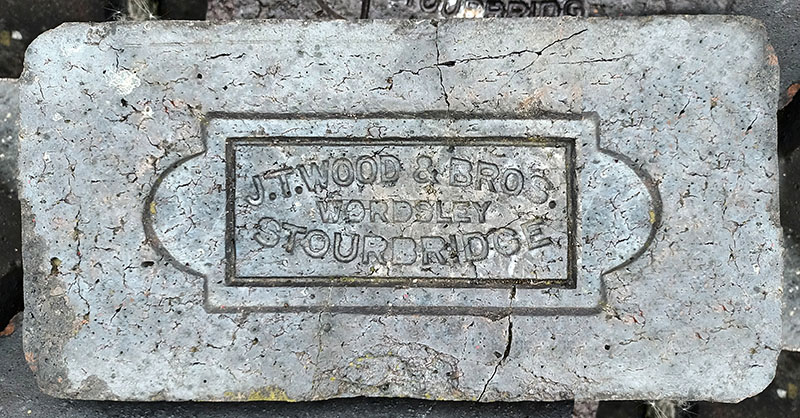
Photo by David KItching.
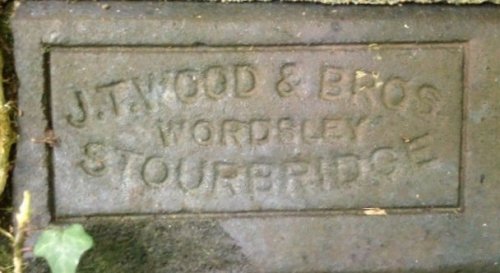
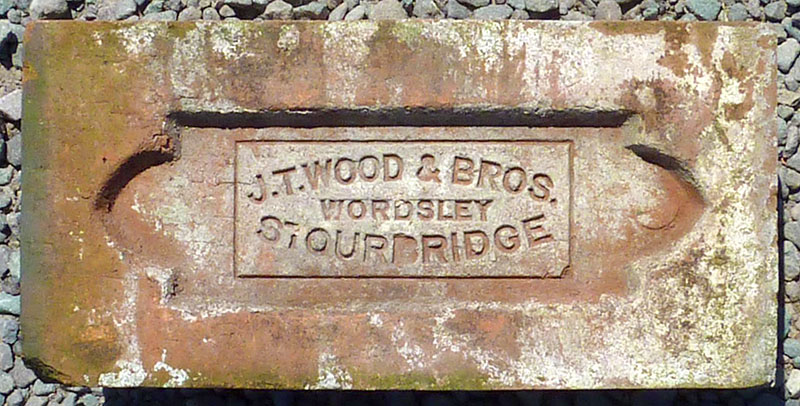
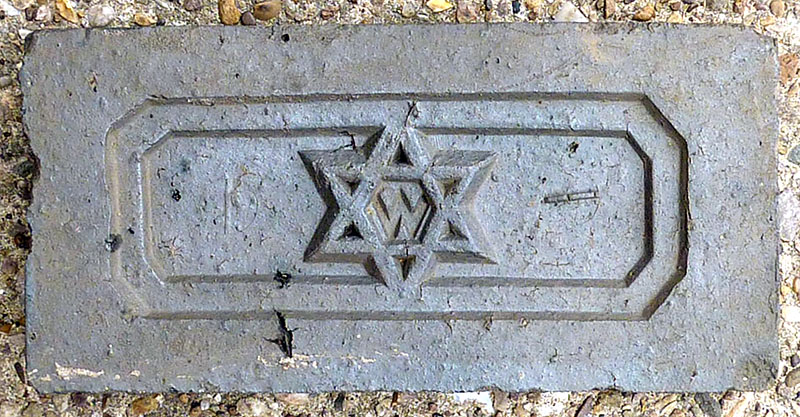
Photo by Martyn Fretwell. Michael Hammett has added some information on this brick: Identification was provided in the form of an advertisement found in the London Suburbs Post Office Directory for 1884. It is for "Best Staffordshire Blue Bricks" by P & S Wood of West Bromwich and shows the Star of David symbol, with the W in the centre, as their trade mark. Being advertised in London, it is reasonable to assume that the products could have been supplied by rail to most parts of the country.
Peter & Samuel Wood, manufacturers of blue & red bricks are recorded in Kelly's 1884 edition at the Pump House Brick Works, West Bromwich. This entry continues until the 1900 edition when the company is then listed as Peter Wood Ltd. at the same address. 1904 is the last entry for Peter. Peter & Samuel were 7th and 8th sons of George Wood of George Wood & Sons, Brades, Oldbury & Albion Brickworks, West Bromwich. Photo and info by Martyn Fretwell.
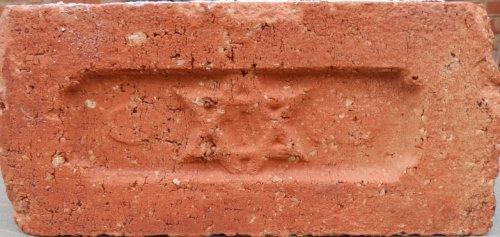
Found at a reclamation site near Towcester by Nigel Furniss.
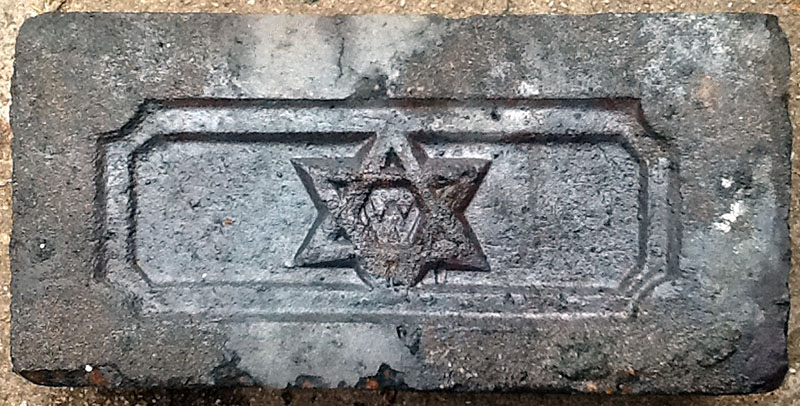
Photo by Frank Hilton.
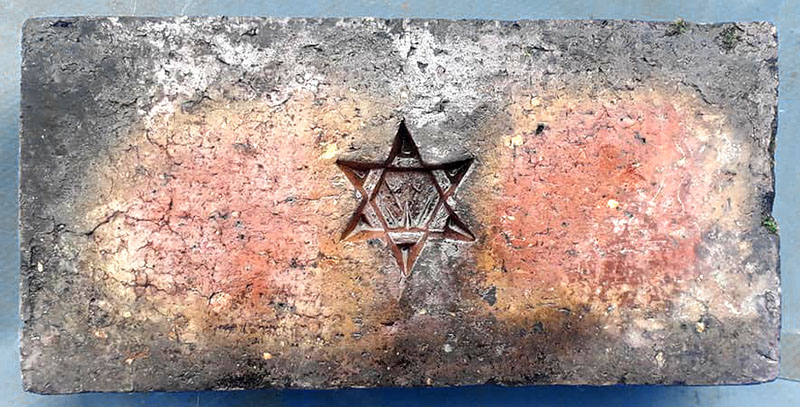
Photo by Peter Bailey.
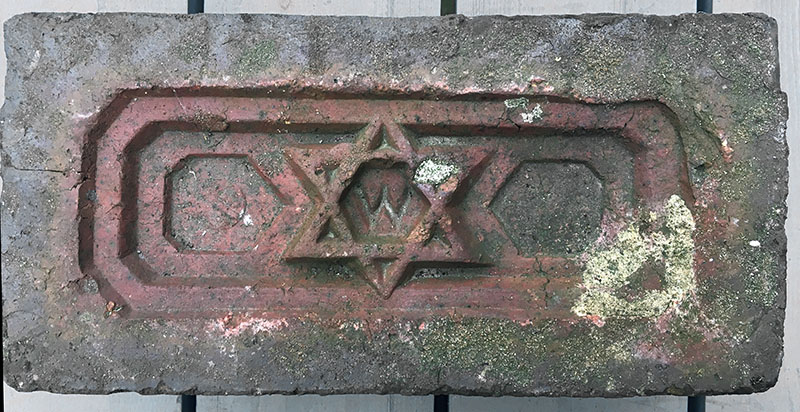
Photo by Rick Tuck.
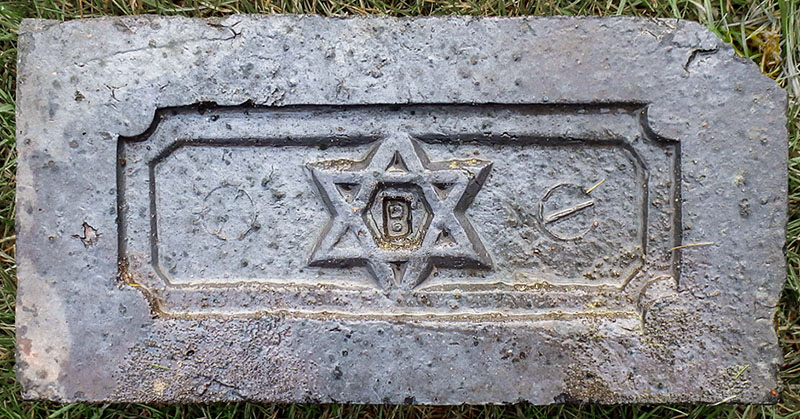
Photo by Frank Lawson.
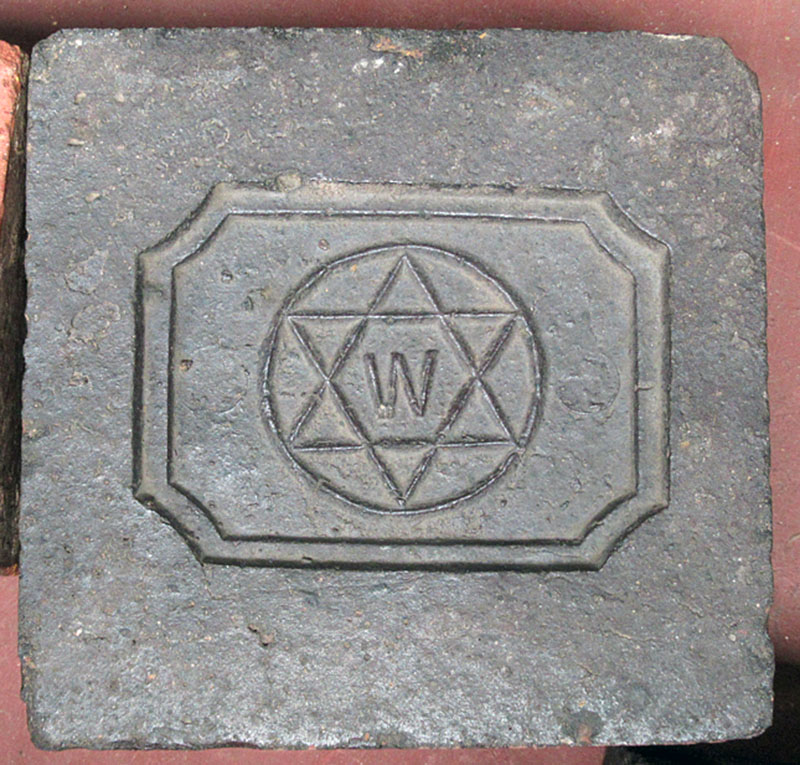
Photo by Martyn Fretwell.
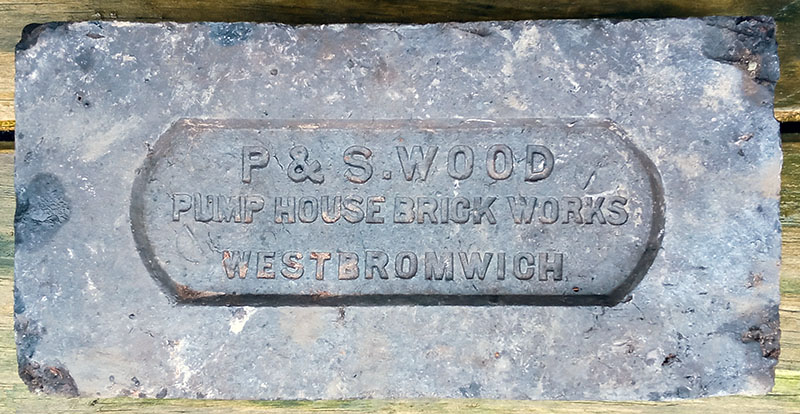
Photo by Brunhilde Bontrup.
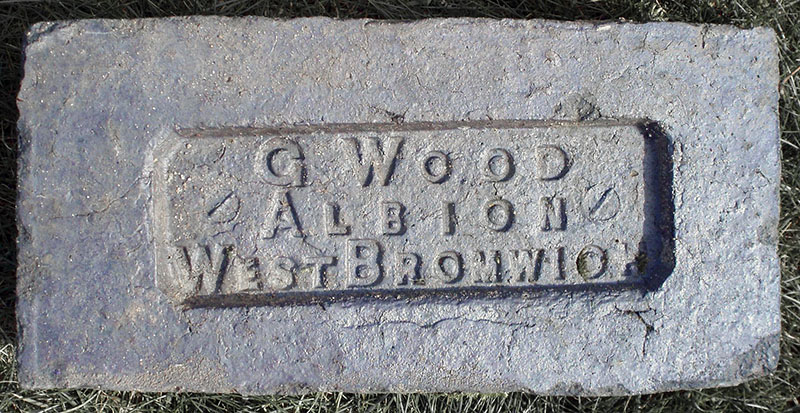
Martyn Fretwell writes :- The 1861 census lists George Wood as a brickmaster employing 50 men, women and boys. George Wood (blue), Albion Works, West Bromwich is listed as brickmaker in Kelly's 1868 edition. George then goes into partnership with Mr. Ivery forming Wood & Ivery in 1872. Photo by courtesy of the Frank Lawson collection.
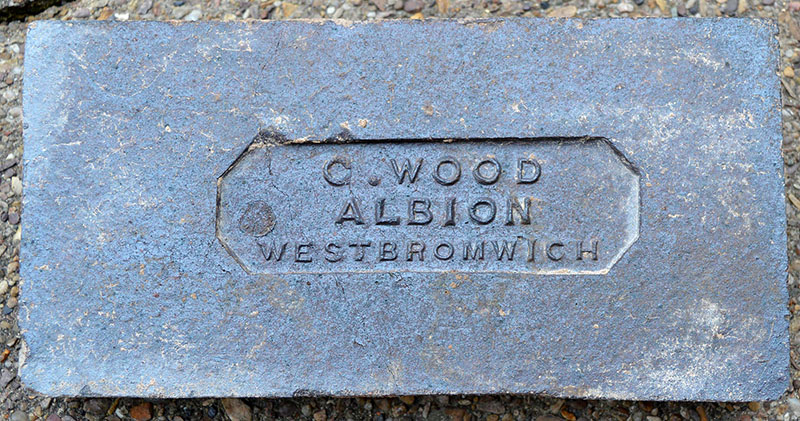
Photo by Frank Lawson, brick from the Martyn Fretwell collection.
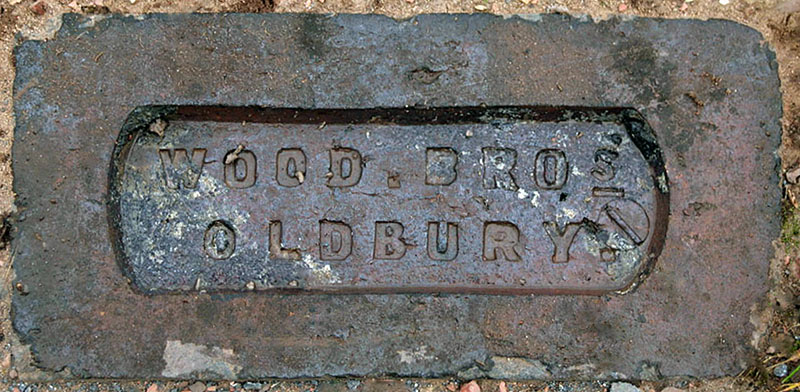
Found near Papplewick pumping station in Notts. by Alan Murray-Rust. Martyn Fretwell writes :- The company of Wood Bros, Oldbury is listed in 1876 and 1880 in Kelly's Directory and then from 1884 as George Wood (red,brown & blue), Brades Brick Works, Tividale, Oldbury. This entry continues until the 1900 edition when the works is then recorded as George Wood & Sons, Brades Brick Works. The company's new name continues until Kelly's 1912 edition. We then find in the Edinburgh Gazette dated October 1914 that the company of George Wood & Sons went bankrupt. It was by then owned by George Wood senior's sons George junior, Samuel & Harry.
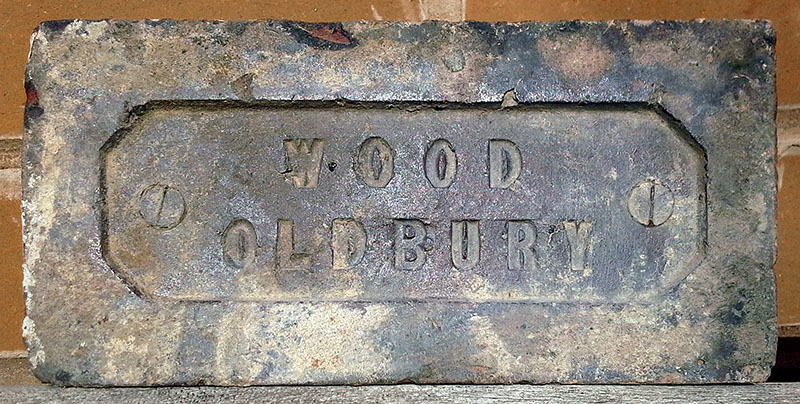
Photo by Angel Rose.
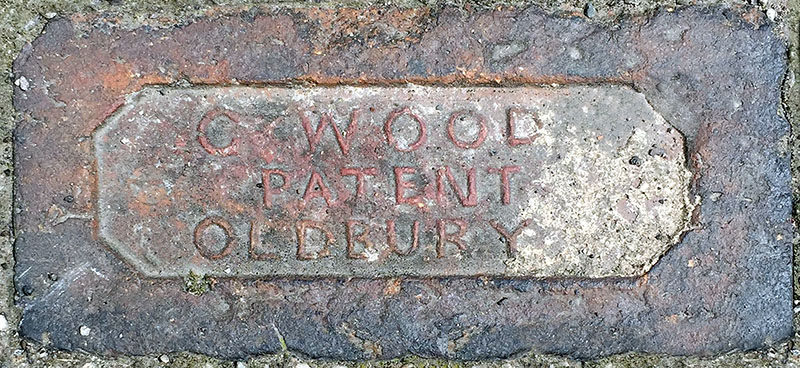
Photo by Roger Woods.
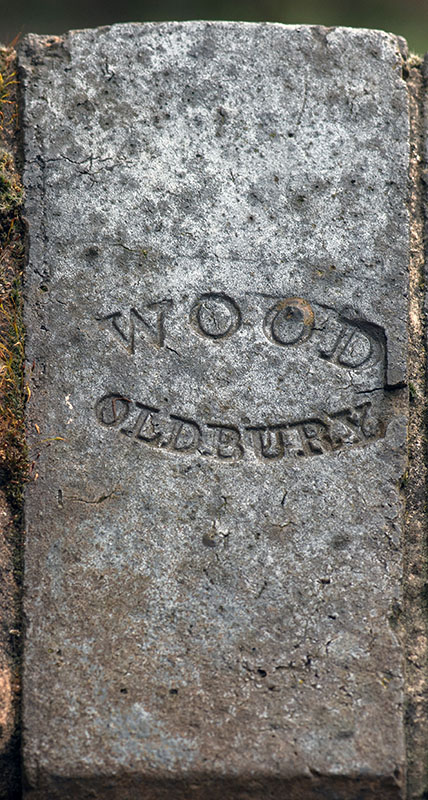
Photo by Tim Geater.
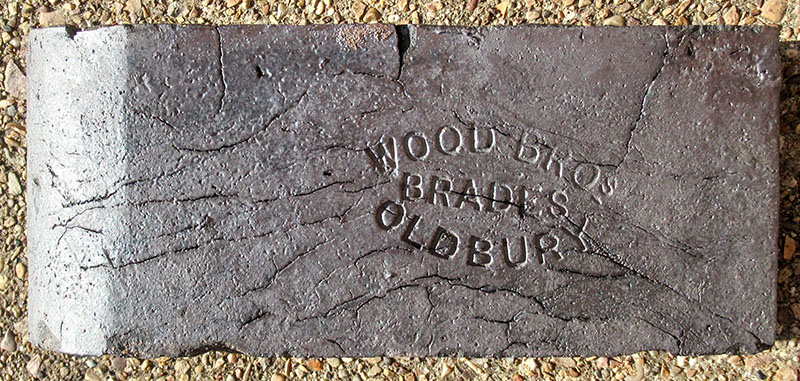
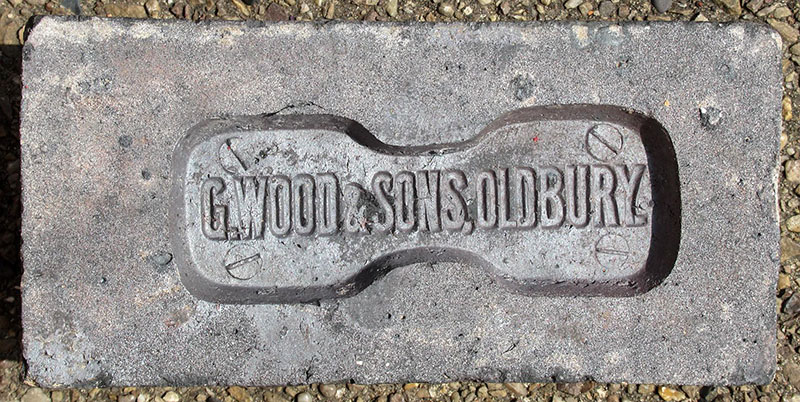
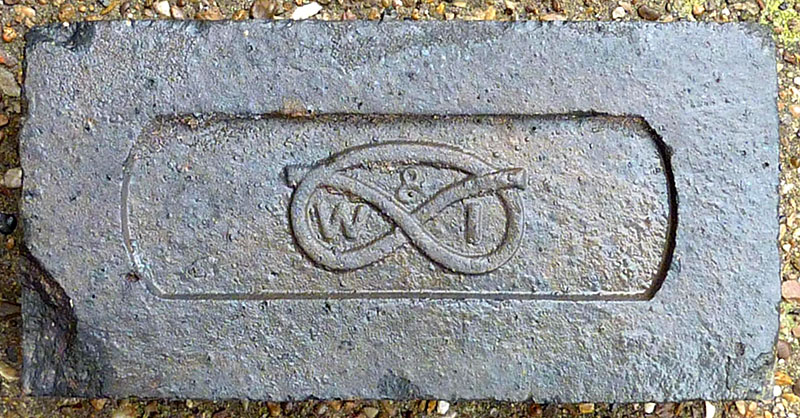
In the 1890's Wood & Ivery, produced between 200,000 and
300,000 blue bricks a week at it's Albion
Brickworks. The brickworks being adjacent to Joseph Hamblet's
works at Greets Green, West Bromwich. Photo by Martyn
Fretwell. Martyn adds :- Wood & Ivery is first listed in
Kellys 1872 edition at the Albion Brick Works in West Bromwich,
but this Works had been started by George Wood, operating it under
his own name in 1868. The
Company continued to operate under the Wood & Ivery name &
the name is listed until it's last entry in Kelly's, which was in
1904.
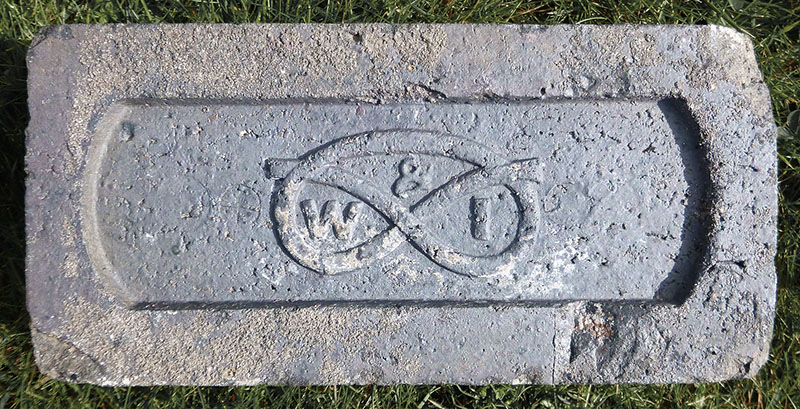
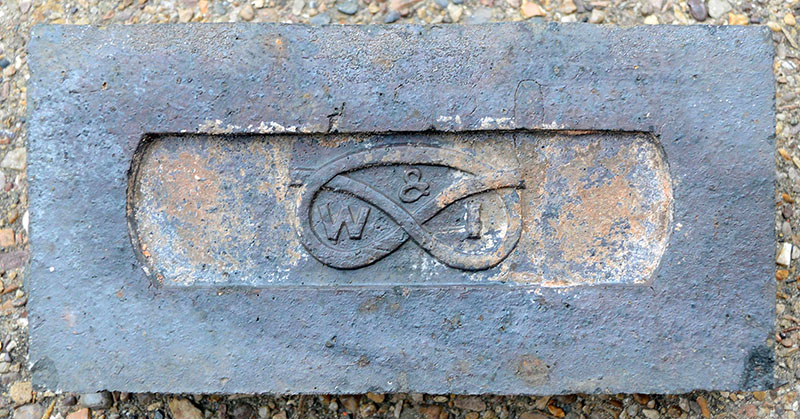
Photos by Frank Lawson.
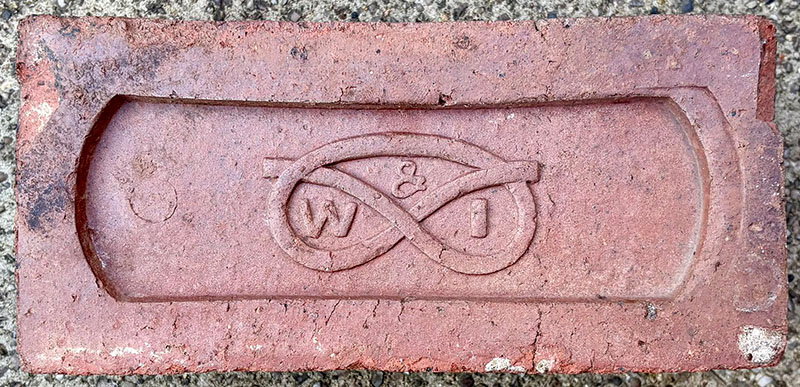
Photo by Phil Burgoyne.
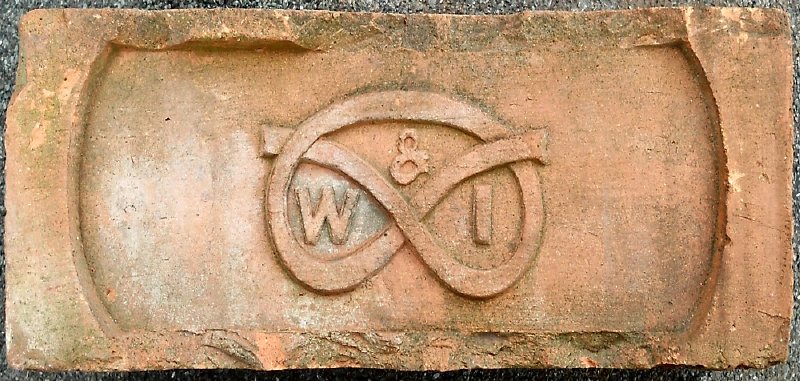
Photo by Ray Martin.
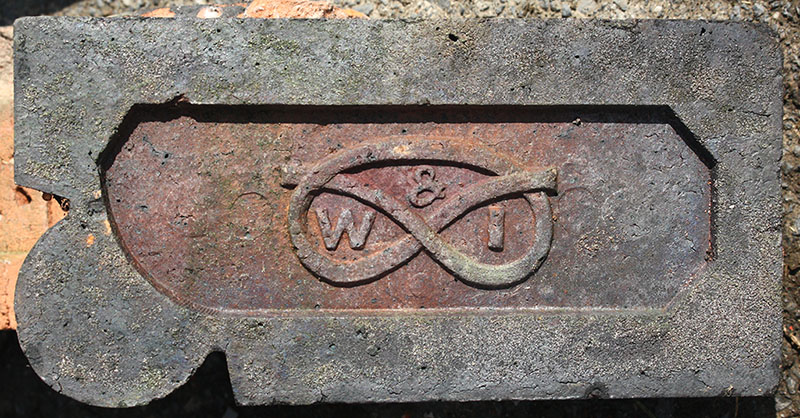
Photo by David Kitching.
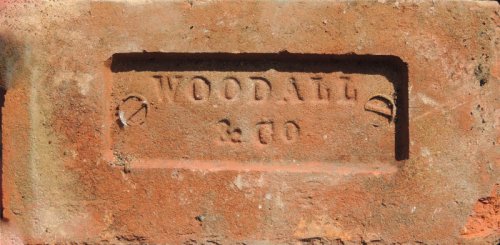
Woodall & Co, but listed as Woodhall in Directories were coal
and brick masters at Tansey Green, Pensnett, Dudley and are
listed in Kelly's 1872 edition through to the 1892 edition. Photo
by Colin Wooldridge from the John Cooksey Collection, with Info by
Martyn Fretwell.
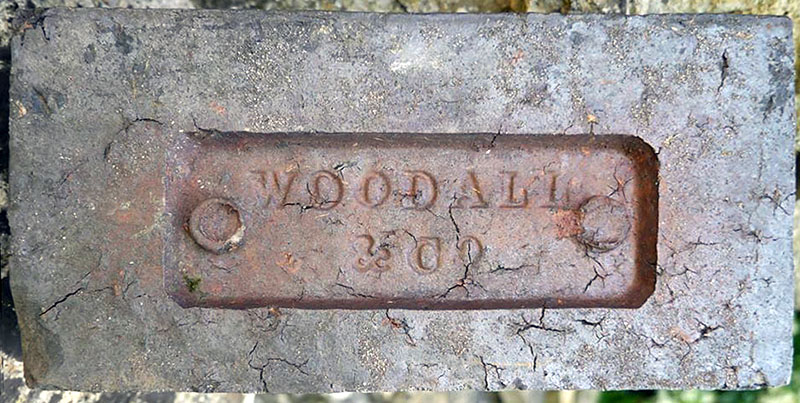
Photo by Hamish Fenton.

Francis Woodbridge, Holyport, Bray, Maidenhead, Berks. He is listed in Kelly's 1899 Berkshire Directory as brick, tile & pottery works, drain pipe manufacturer, builder & timber merchant, steam saw mills, wheelwright, cart & van builder, grocer & provision dealer. Photo and info by Frank Lawson.
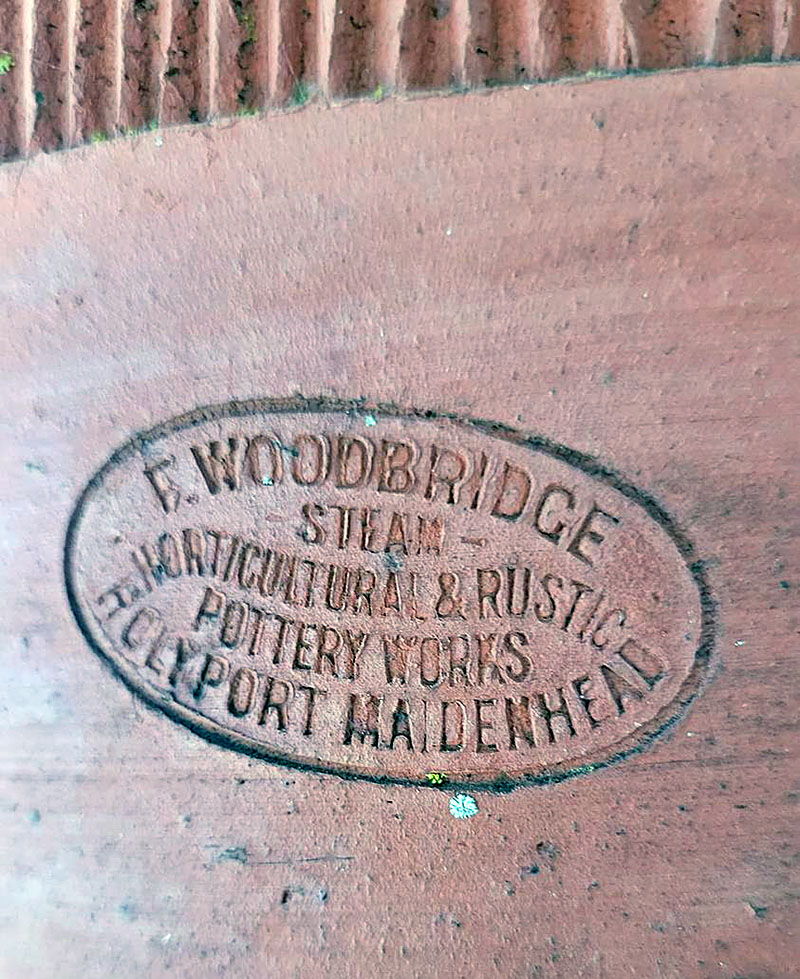
Photo via Denis Ayers.
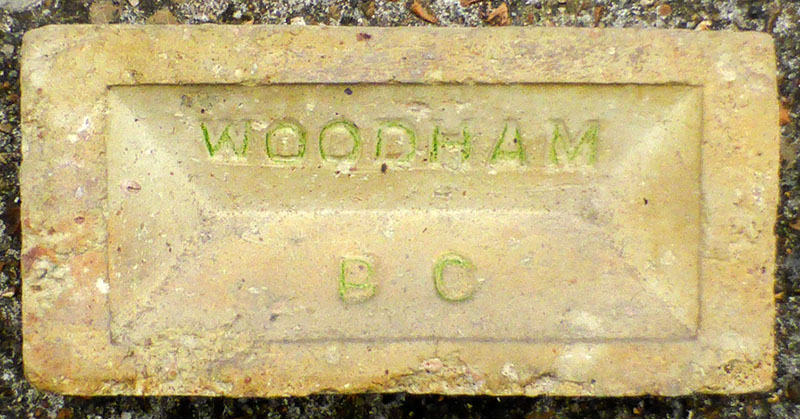
The Woodham Brick Co. Ltd. Woodham, Aylesbury, Bucks. is listed in Kellys 1939 edition. The works which was started around 1936 was situated next to Akeman Street Railway Station (LNER) in Woodham. The brickworks is still shown on the 1955 OS map, but the year it closed is unknown. Photo & Info by Martyn Fretwell.
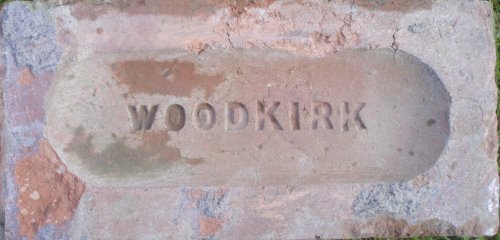
David Gamble writes: I believe this to be a Whitaker brick from their Soothill Brickworks in Quarry Lane, Woodkirk, which is between Morley and Dewsbury. Photo by Frank Lawson.
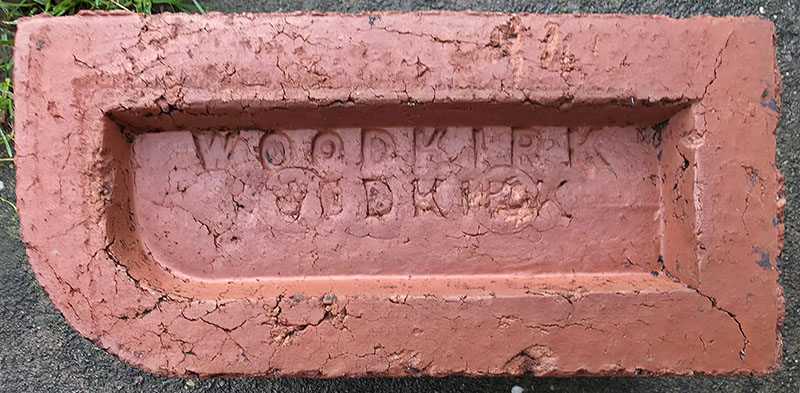
Photo by Richard Dobson.
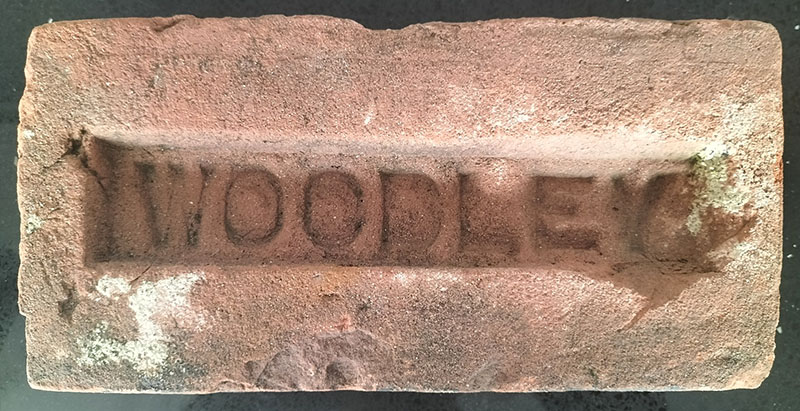
Photo by Gary Wakelin.
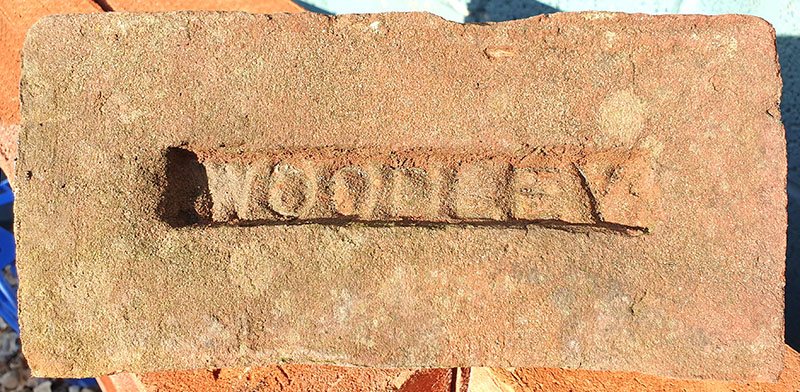
This came from a house that was built entirely of these bricks in 1933. It is said to have been made in a brickyard at Woodley, on the East side of Reading. Photo by Malcolm Palmer.
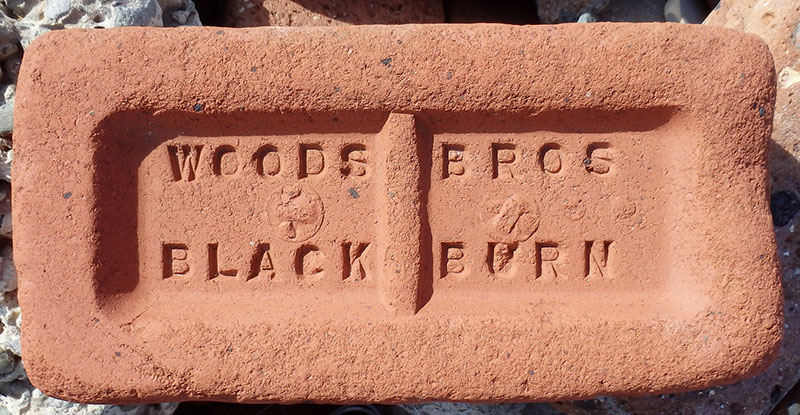
Photographed on the seashore at Crosby, Merseyside.
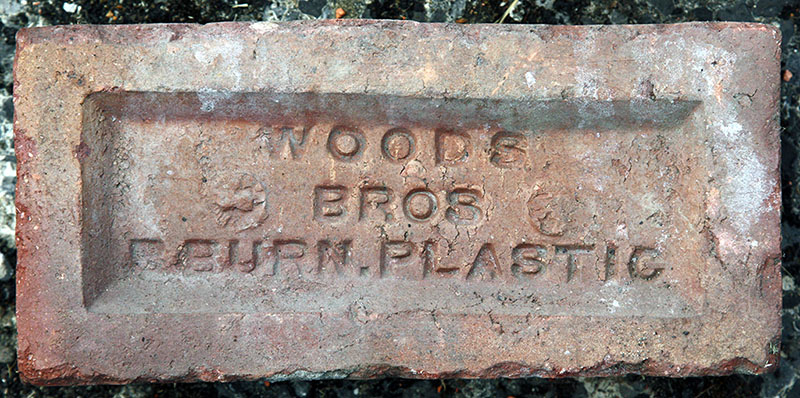
Woods Brothers Ltd., Audley Range, Blackburn. Barrett's Blackburn & Burnley Directory 1931. Info from Frank Lawson, photos by David Kitching.
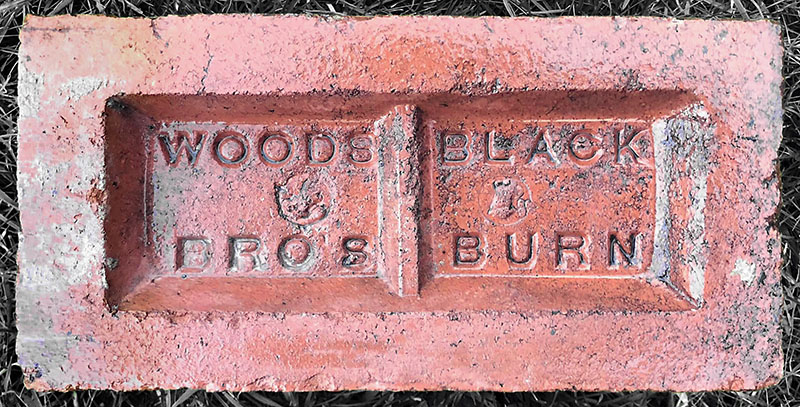
Photo by Jason Stott.
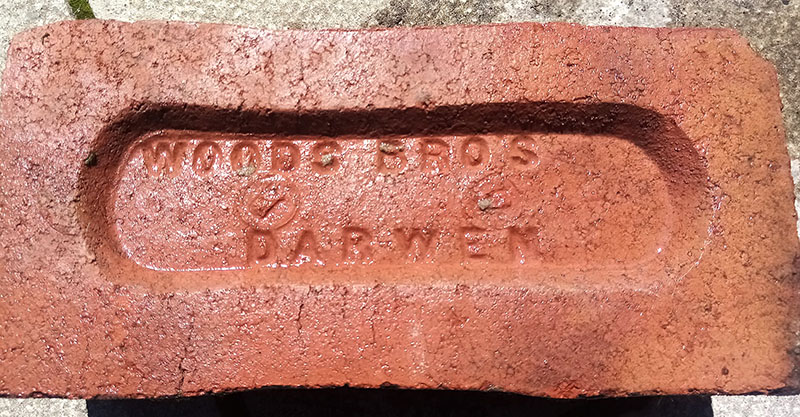
Photo by Brim Brooks.
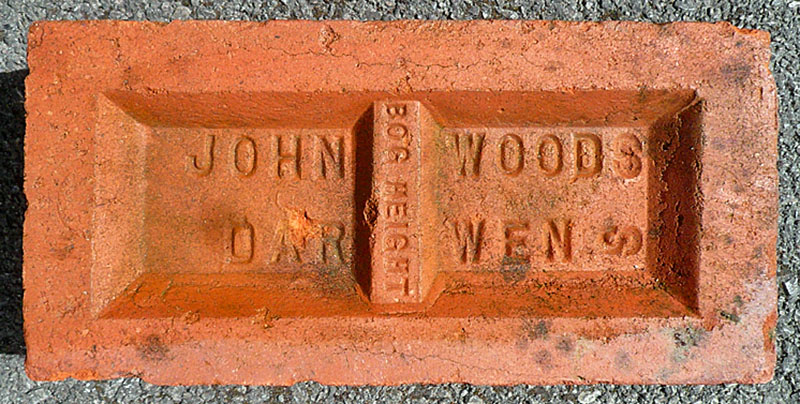
John Woods, Bog Height, Darwen. The later became the New Century Brickworks. Photo by Alan Davies.
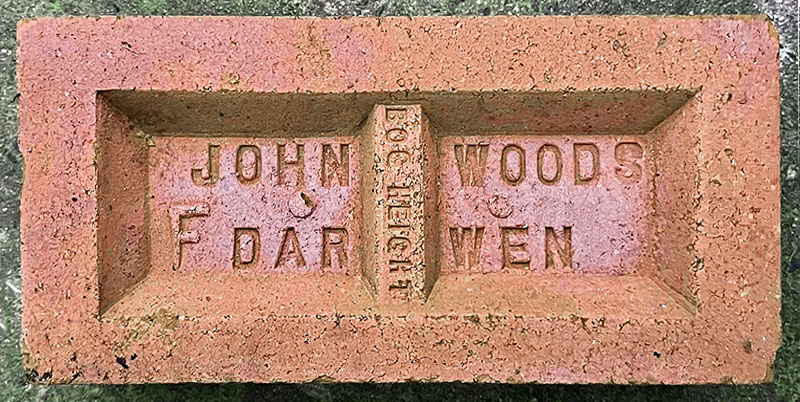
Photo by Phil Burgoyne.
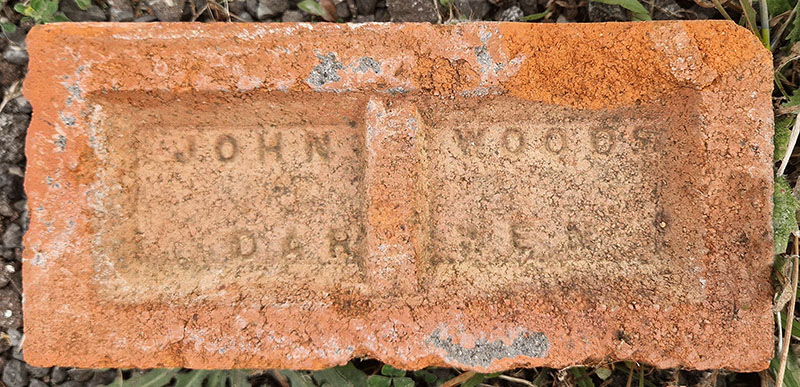
Photo by Steve Reynolds.
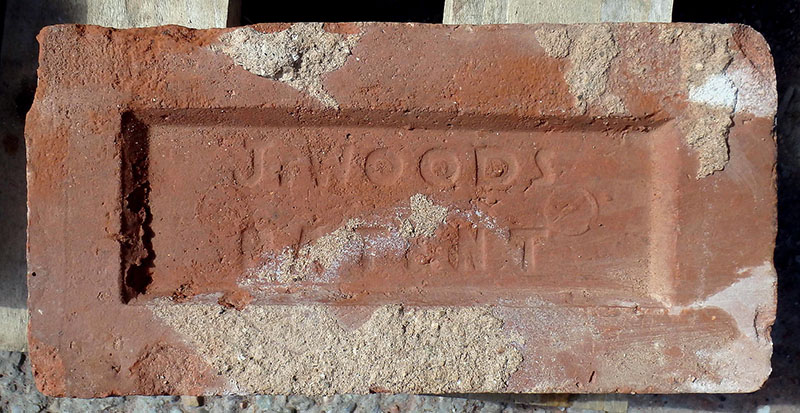
 Ltd 2 - Martyn Fretwell.jpg)
 Ltd 1 - Martyn Fretwell.jpg)
Photos by Martyn Fretwell. More information here: https://www.norwoodsociety.co.uk/pdf/review195.pdf
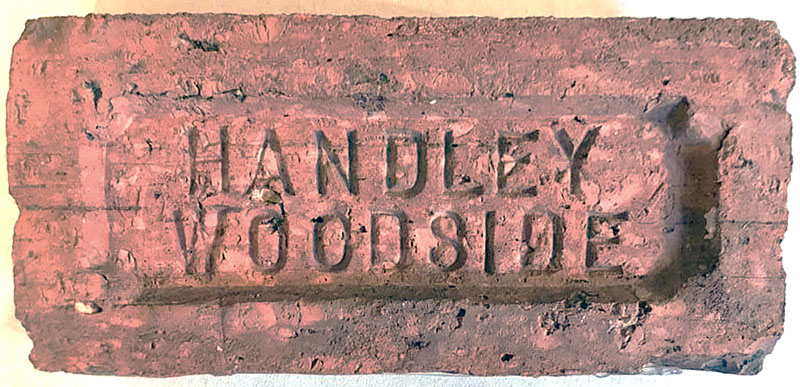
The Woodside Brick Co. was established
in 1909 by Edward Handley at Woodside Green, Croydon. This works had previously been operated by
Horris Parks until his death. Edward Handley was the son of Edward Handley (senior) a Lincoln
brickmaker. Both father & son were involved with the running of the Willesden & Acton Brick Company
before Edward junior moved to the Woodside works in 1909. After Edward junior’s death in 1946 the
company was then renamed by it’s Directors as the Woodside Works (Croydon) Ltd. In 1951 the
company purchased the Newdigate Brickworks in Surrey & the Ashford Brick, Tile & Pottery Co. was
purchased in 1961. In November 1963 with the need to sell Woodside Works (Croydon) Limited's three
brickworks by it’s Directors, the business was purchased by Hall & Co., a local building supplies
company. Info by Martyn Fretwell & photo courtesy of the Edward Handley Collection.
Production began hundreds of years ago, although the site is not recorded on the Sheffield maps before the year 1902. This was because, until 1900, the Woodside area was not actually part of Sheffield - Meersbrook being the traditional boundary between the two counties of Yorkshire and Derbyshire. There were about fifty small brickworks in Sheffield at that time, each serving the needs of their local community - bricks had to be transported on horse drawn wagons which was quite dangerous considering their weight and the steep hills they had to negotiate. Woodside was one of the largest companies, employing about fifty workers on the Sheffield side of the site. There were two kilns producing a total of approximately 2,000 bricks per day, which may sound a lot, but when you consider that a builder would need about 30,000 to build just one house, it's obvious that the company must have been literally working overtime. The Company produced various types of brick - red brick for house building, blue brick which was made from crushed brown shale, and special engineering bricks. Information by Darren Haywood.
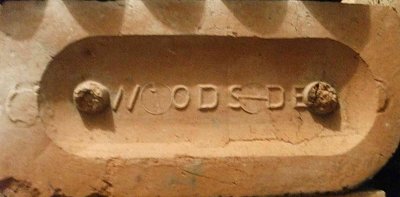
Photo courtesy of Graham Hague (Sheffield) collection. A history of the works may be read here, (scroll down to pages 8 and 9.)
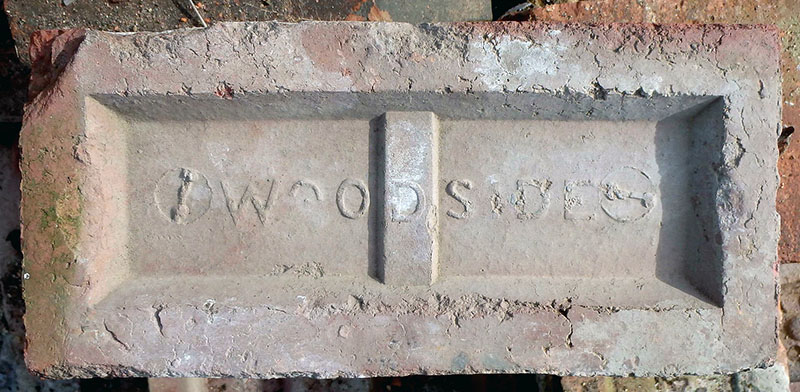
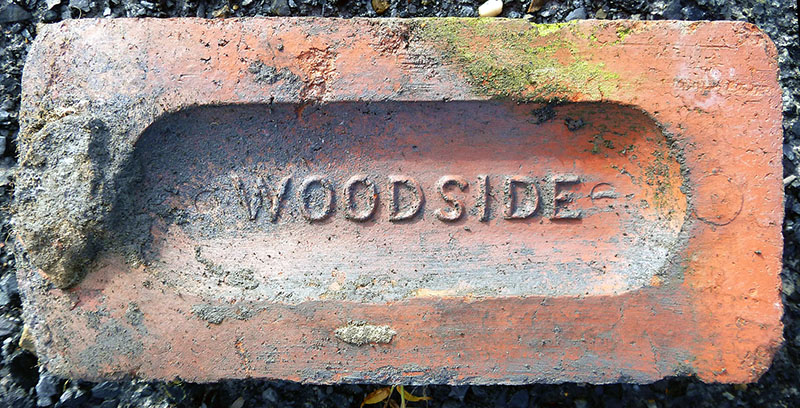
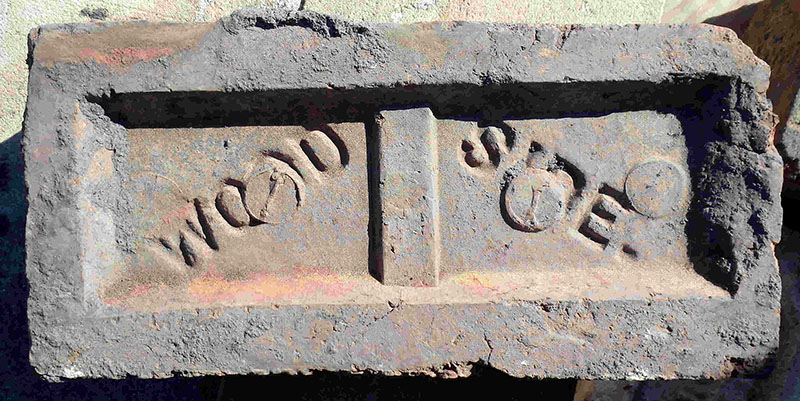
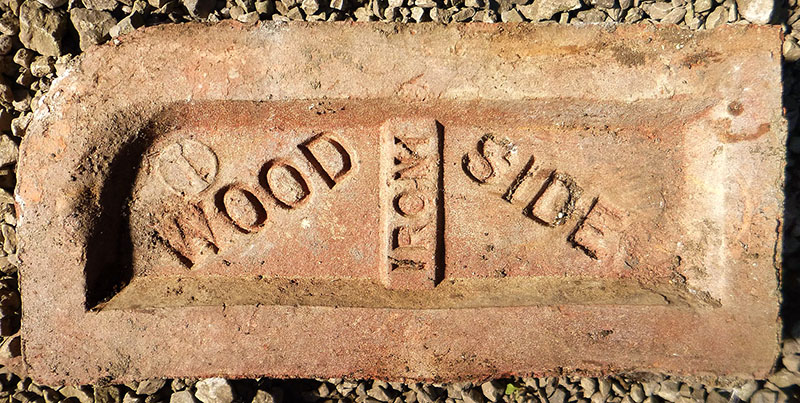
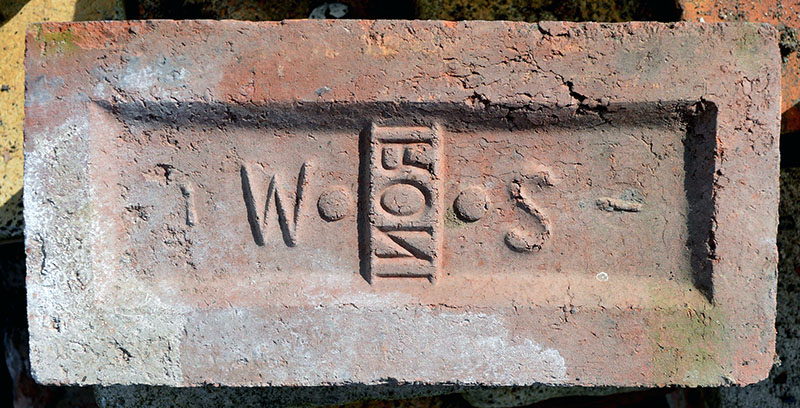
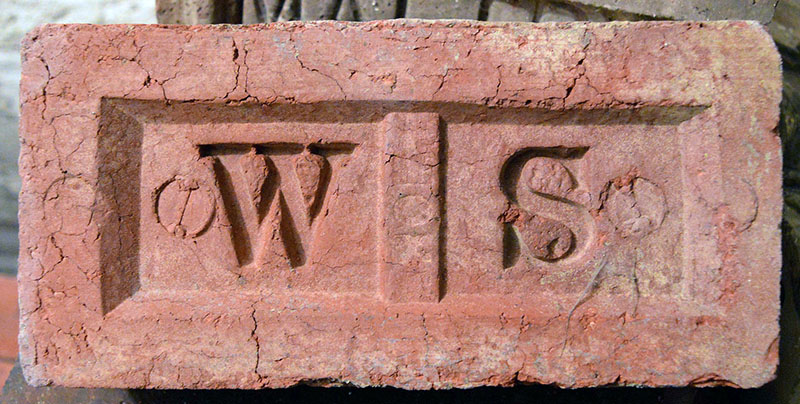
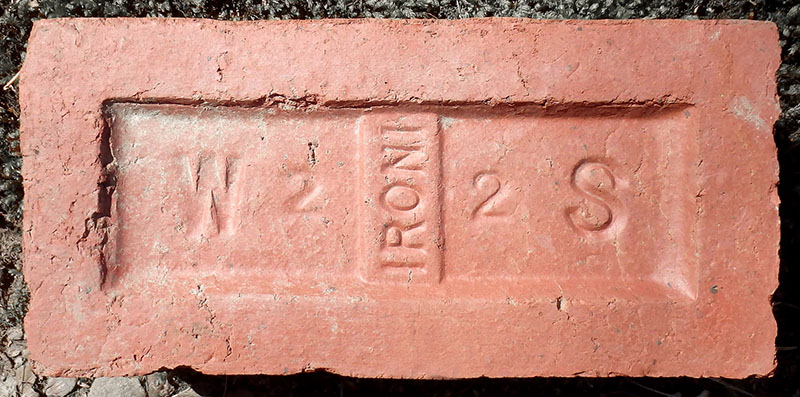
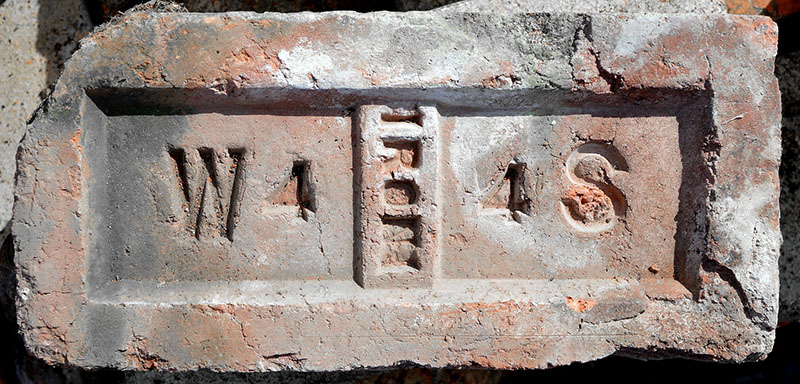
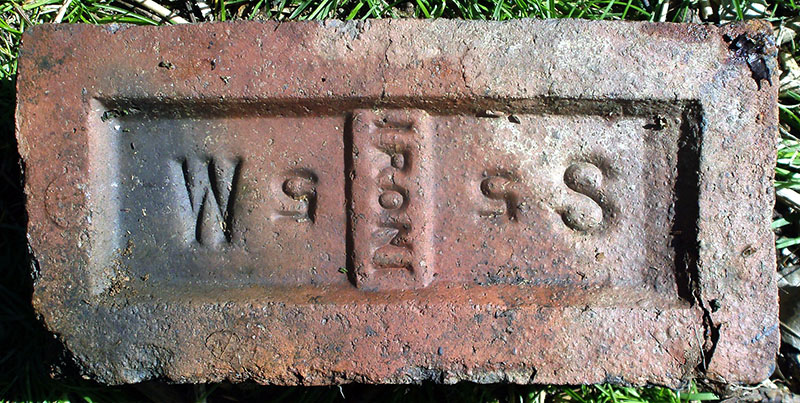
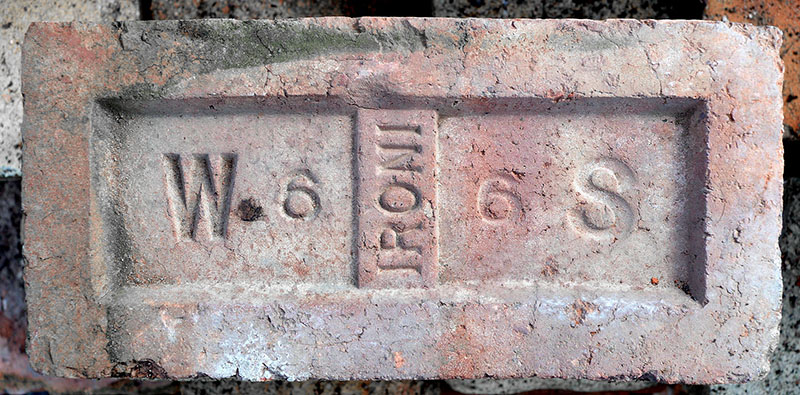
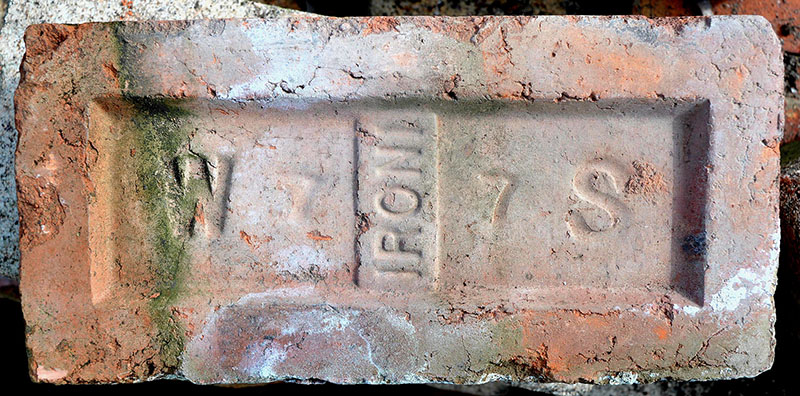
Photos by courtesy of the Frank Lawson collection.
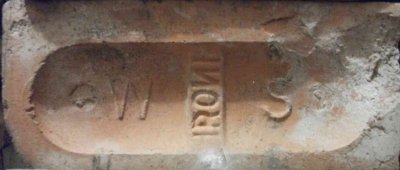
Thanks to Simon Patterson and Graham Hague for the photos.
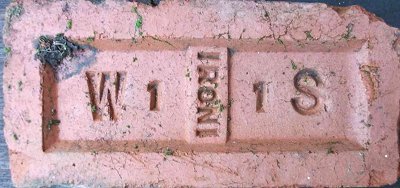
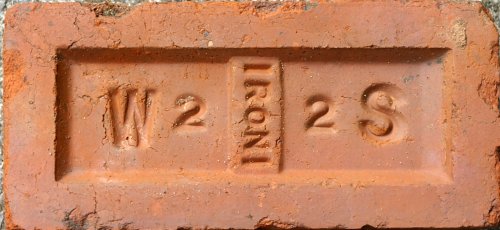
Photo by Bob Gellatly
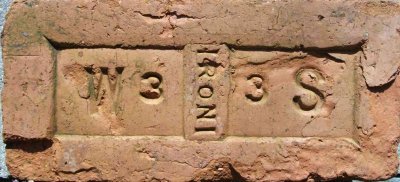
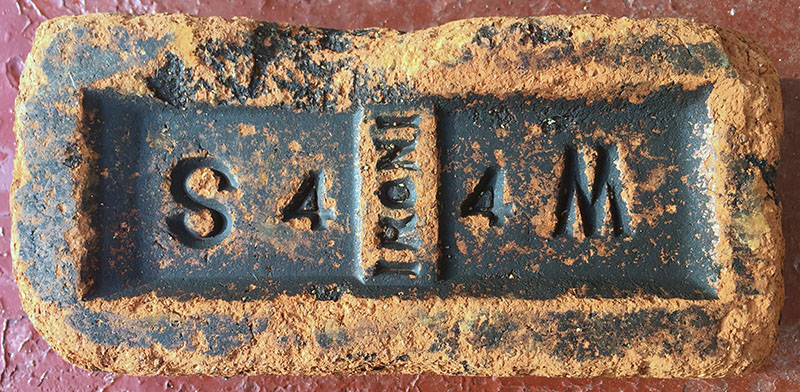
Photo by Clare Oliffe
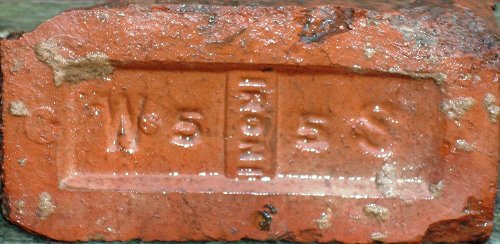
A WS Ironi 5 5 found by Bill Sheppard in his garden in Sheffield
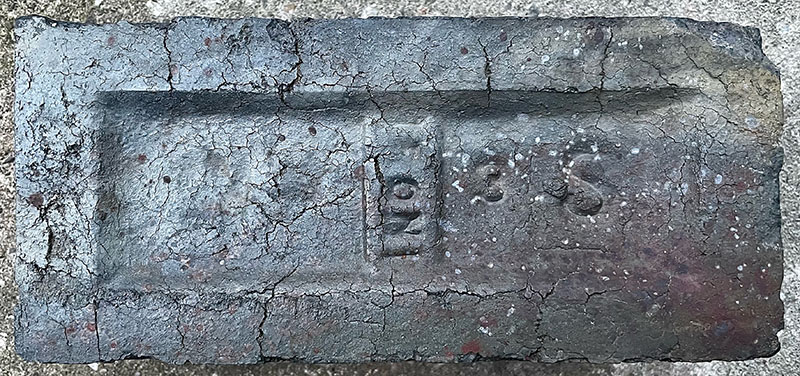
Photo by Phil Burgoyne.
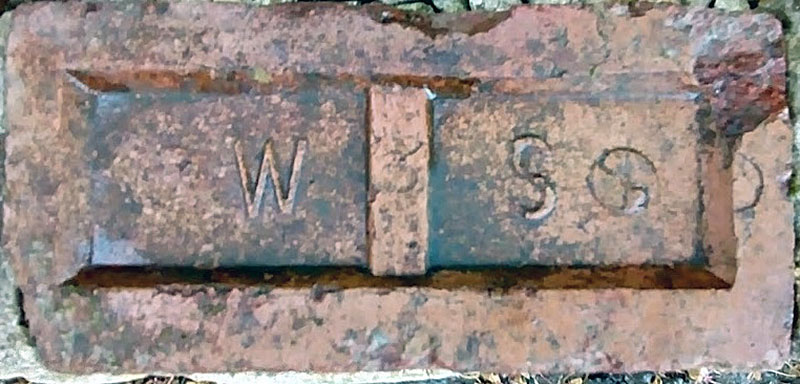
Found in York by Don Boldison
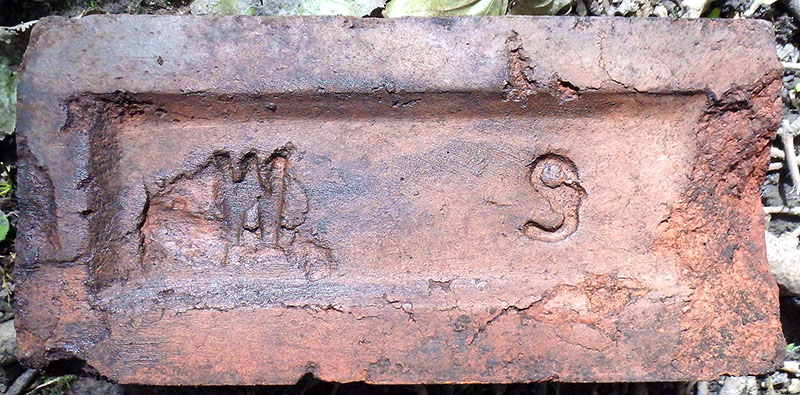
Found at Grimethorpe, photo by Frank Lawson
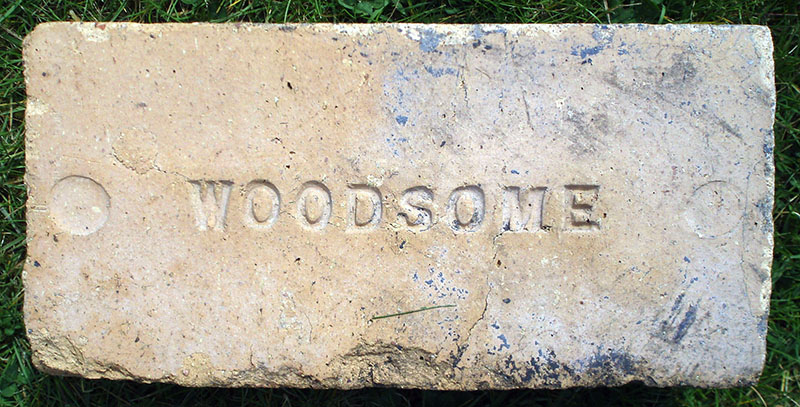
Photo by courtesy of the Frank Lawson collection. Made by Lockwood & Elliott, Woodsome Sanitary Pipeworks, Fenay Bridge near Huddersfield - thanks to Philip Rothery for the info.
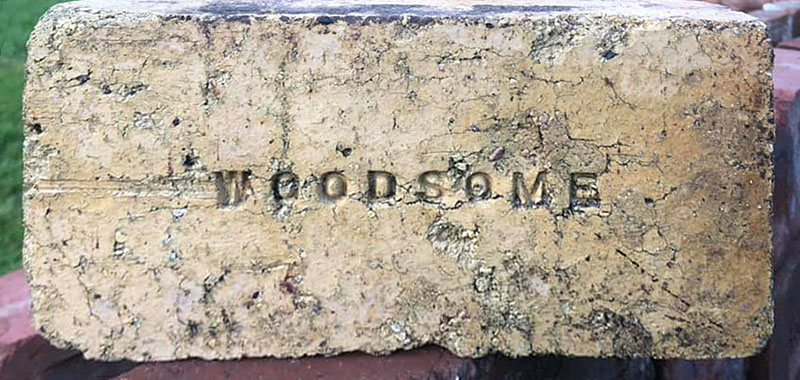
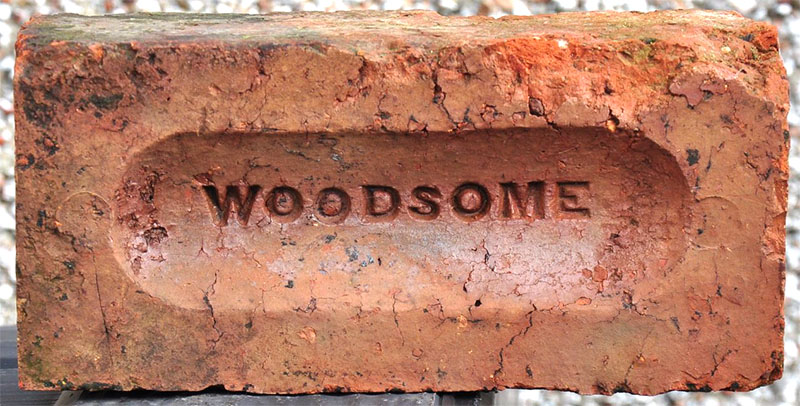
This is clearly not a product of the Woodsome Sanitary Pipeworks (see above) which made glazed pipes and bricks using fireclay. It is probably an early product of the Spa Green works north of Fenay Bridge, Lepton, Huddersfield. Photo by Chris Shaw.
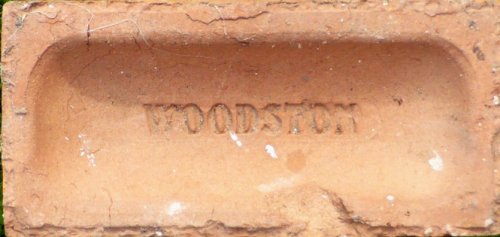
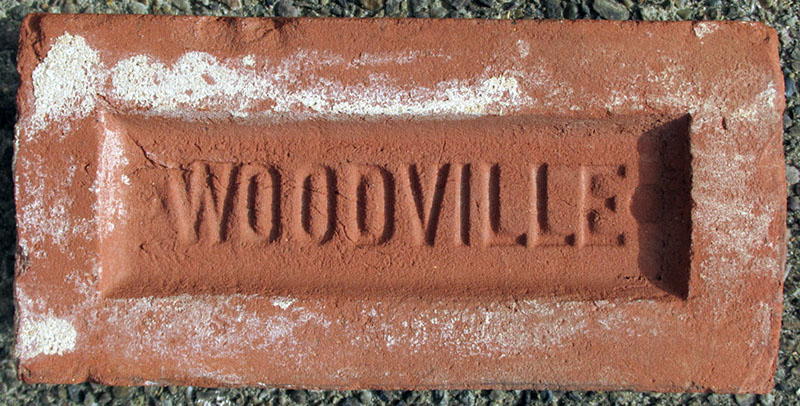
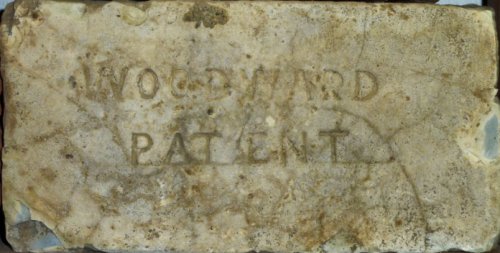
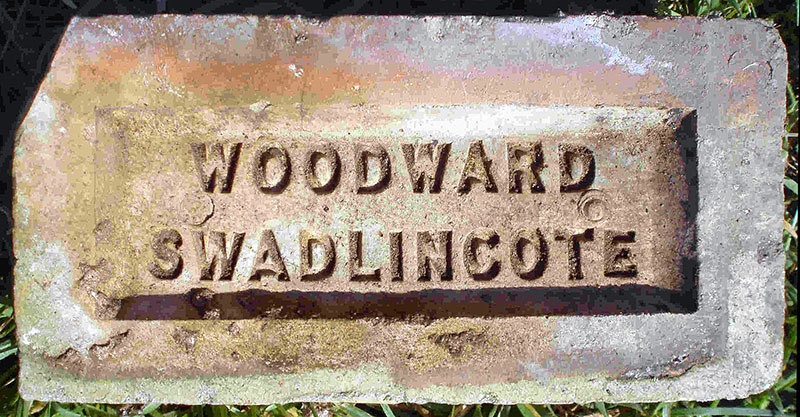
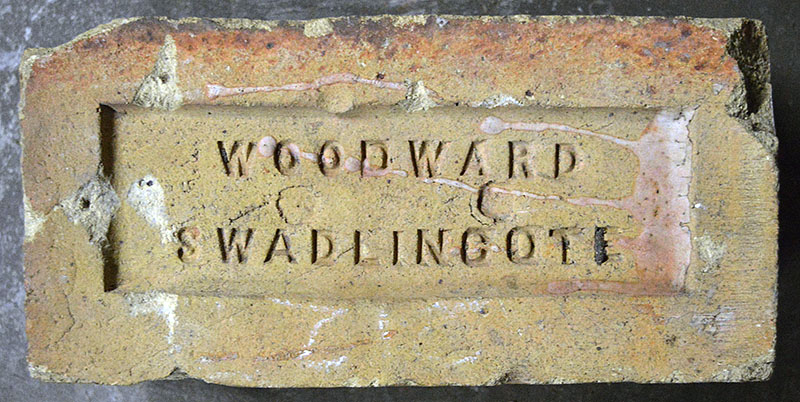
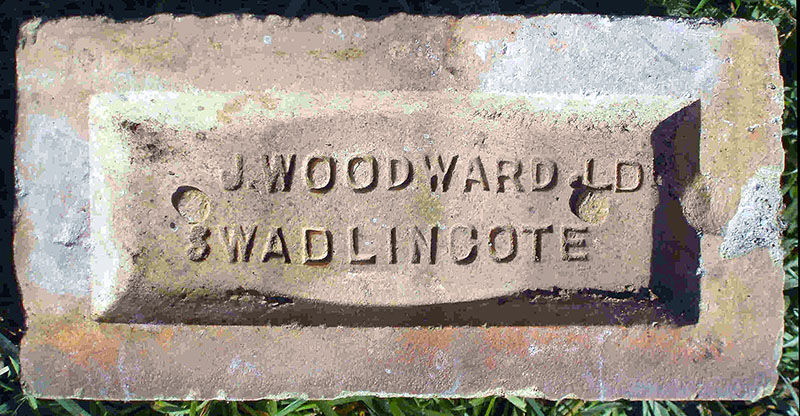
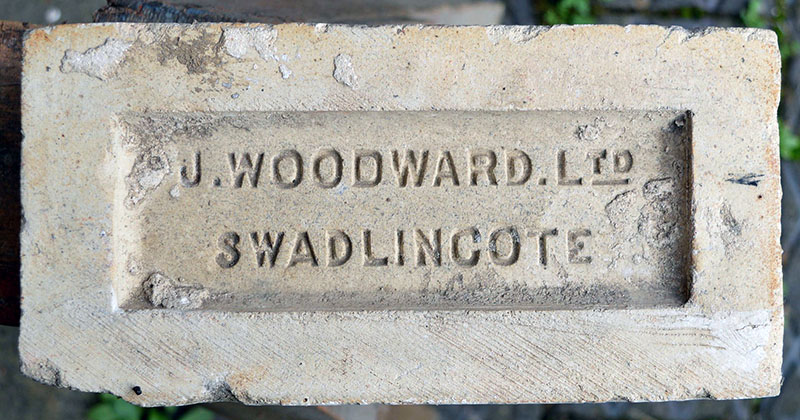

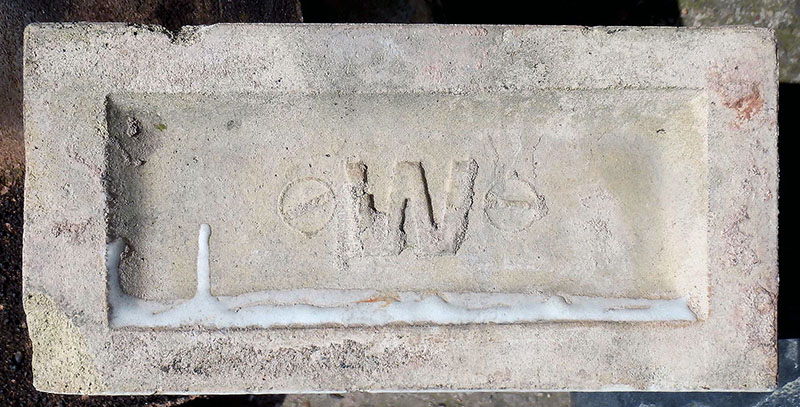
James Woodward, Swadlincote, Burton upon Trent - Kelly's Derbyshire Directory 1912. Photos by Frank Lawson.
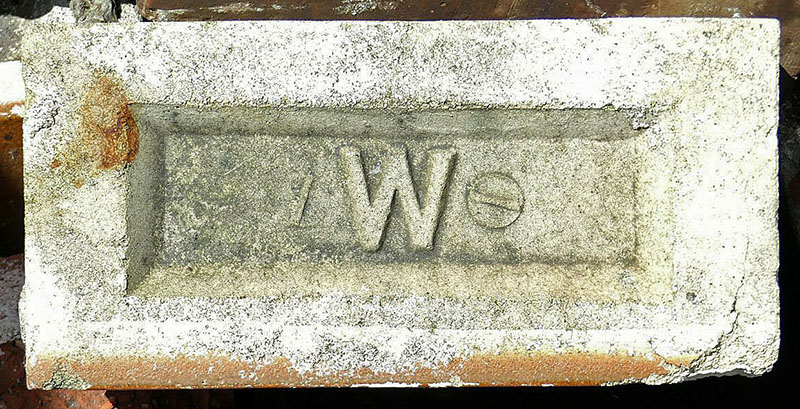
Photo by Alan Murray-Rust.
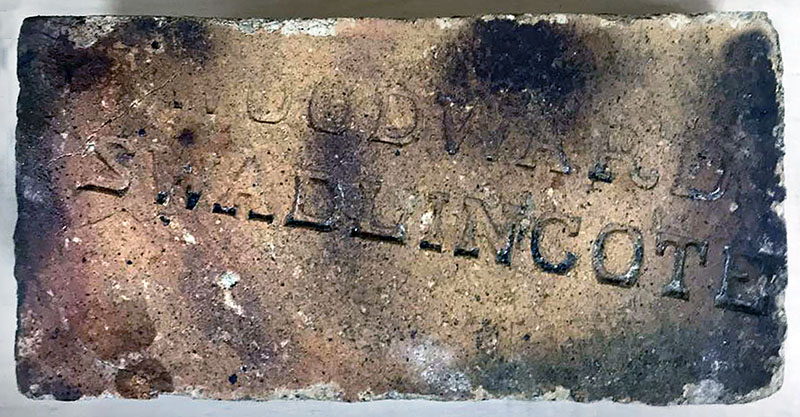
Photo by Shane Harvey.
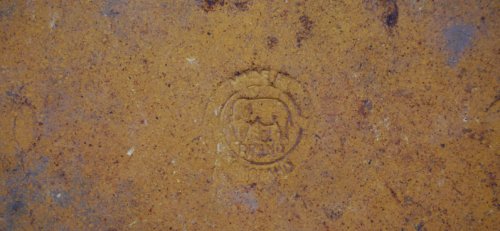
Elephant brand, photographed at Woodward's brickworks by AOC,
Archaeology Group, London.
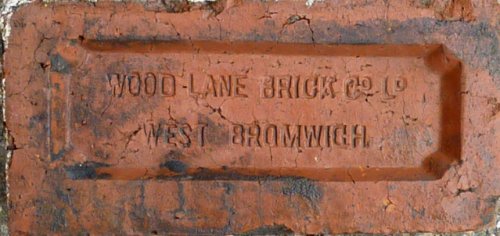
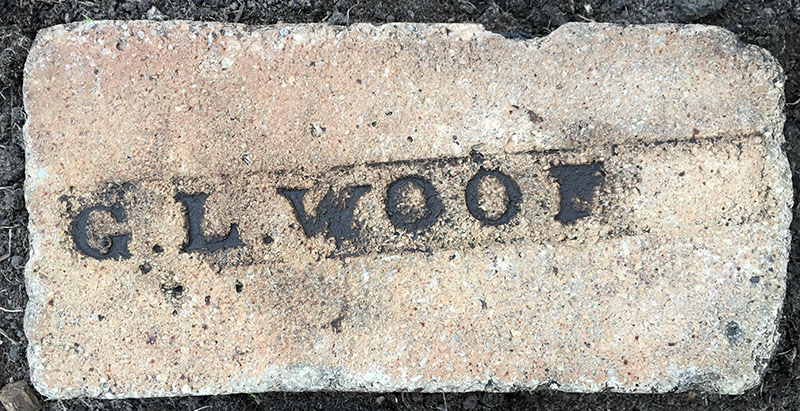
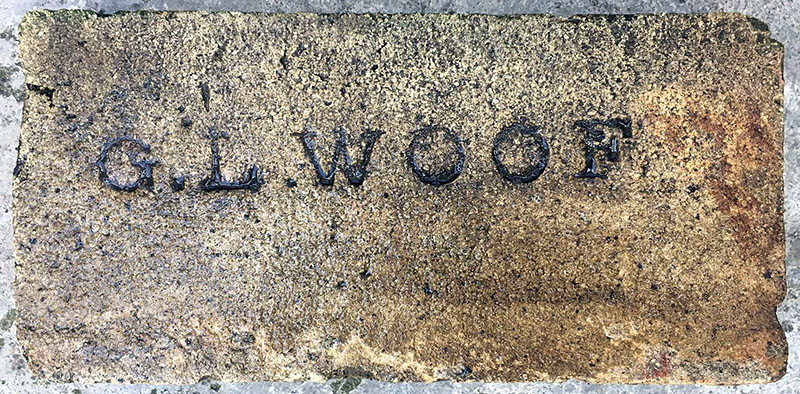
George Leighton Woof of Felling Shore, Gateshead was making firebricks in 1846 and died in 1855 after which his stock in trade was sold off. Photos by Steven Tait.
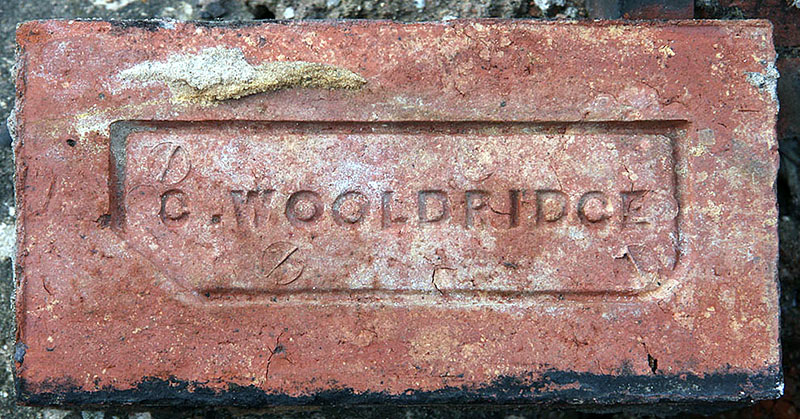
Clement Wooldridge is listed in the 1867 and 1869-70 trade directories as operating at Davis Street, Hanley. The brickworks is not mentioned in 1866 or 1873 and was probably a short-lived venture. It does appear on the 1879 Town Plan as being situated behind the Castlefield Pottery which later became the Etruscan Tile Works. The site had a brick shed and two round kilns. Photo and information by David Kitching.
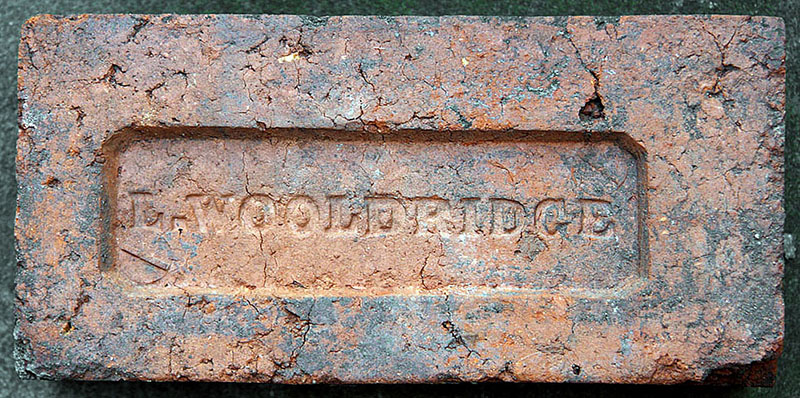
Levi Wooldridge was the elder brother of Clement Wooldridge who ran a brickworks behind the Castlefield Pottery at the end of Davis Street in the later 1860s. When Clement died in 1871 at the age of 37 Levi took over the business for a short time. There is no listing of the business in the 1873 trade directory but Levi continued to live in the area, working as a publican. Photo and information by David Kitching.
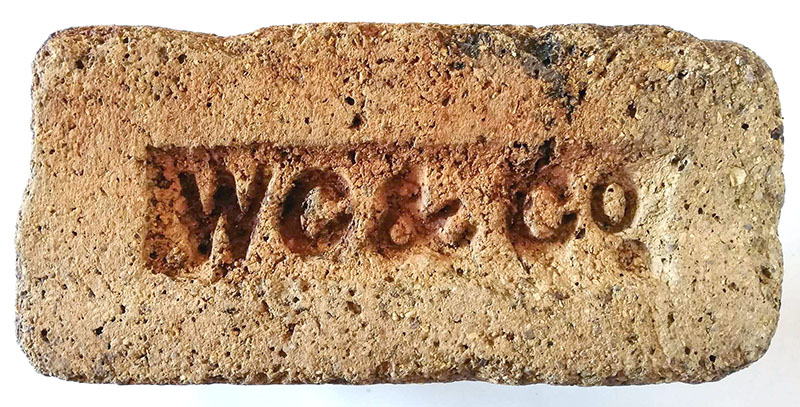
Wooler, Chapman & Co were the proprietors of the Cold Knot Colliery and brickworks at Crook, County Durham. Info by Richard Comish, photo by Chris Tilney.
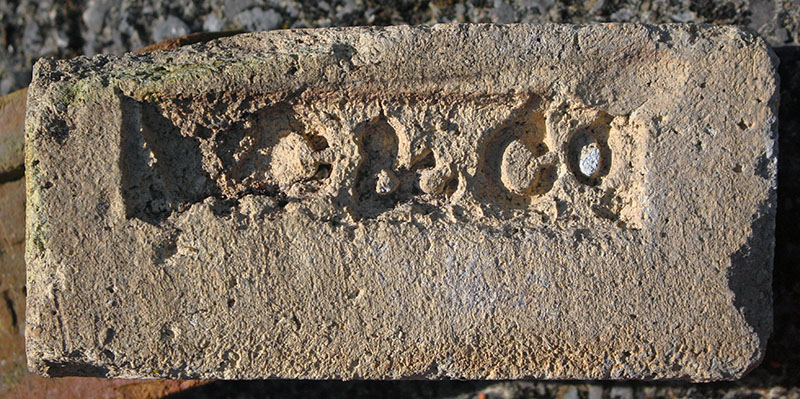
Photo by David Kitching.
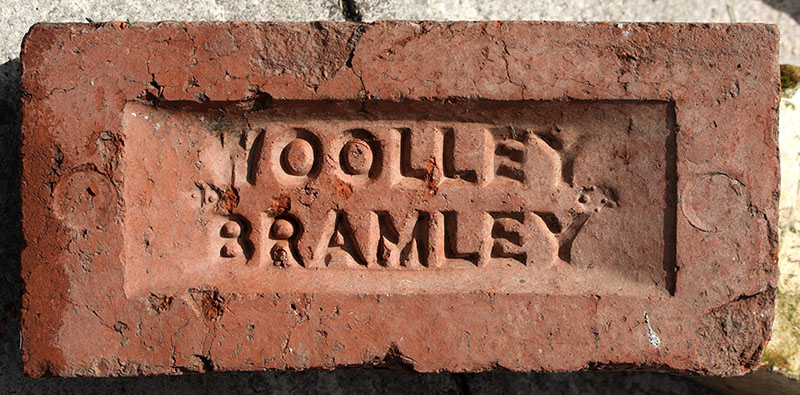
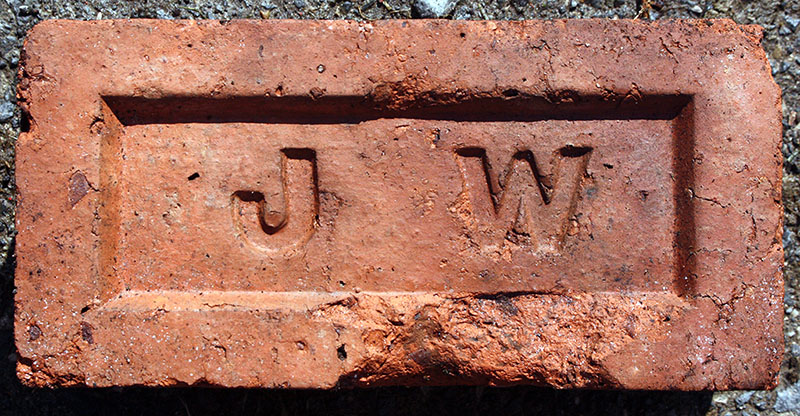
Found in Leeds, photos by David Kitching. Phillip Rothery writes: This brick is commonly seen around Leeds and Jabez Woolley seems to be the most likely brickmaker to fit the initials. The company is listed in trade directories at Elland Road, Leeds between 1875 and 1929. In 1930 Messrs Jabez Woolley purchased the Bramley Brick Company yard.

Photo by Martyn Fretwell.
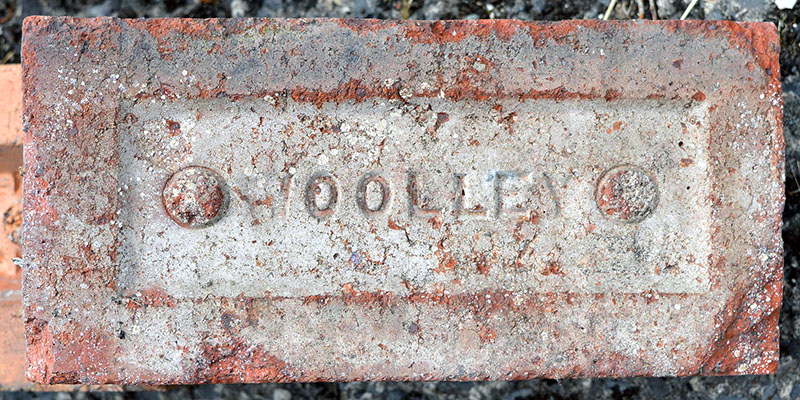
Photo by Frank Lawson.
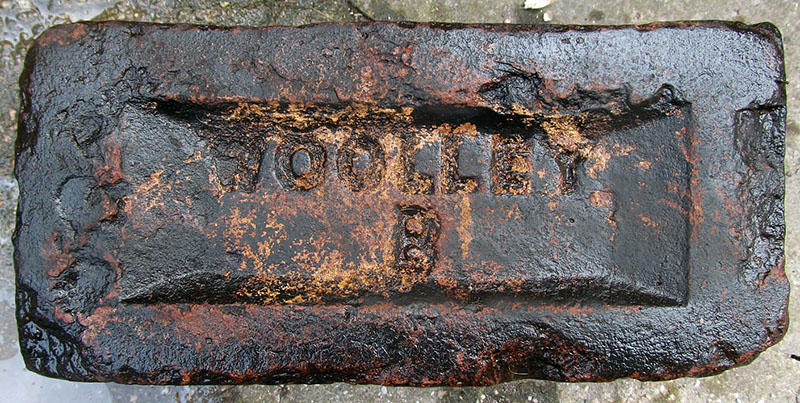
Photo by Zoe Elizabeth Hunter.
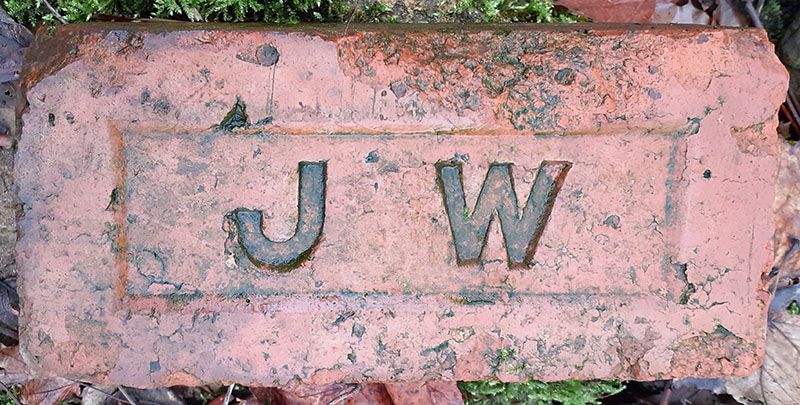
Found at Southowram. Photo by Anita Cook.
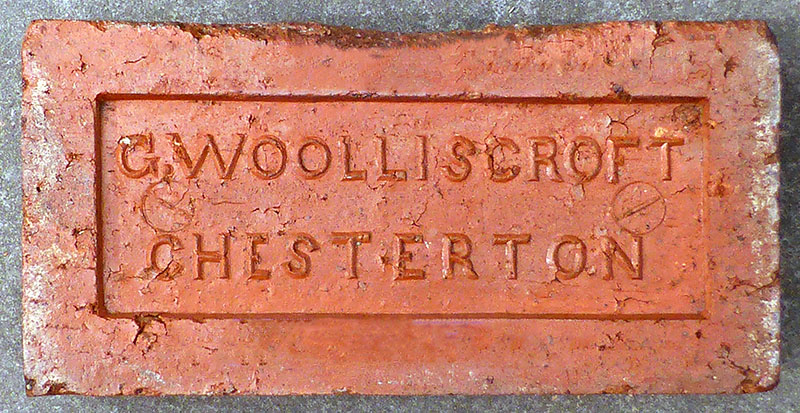
Photo by Martyn Fretwell.
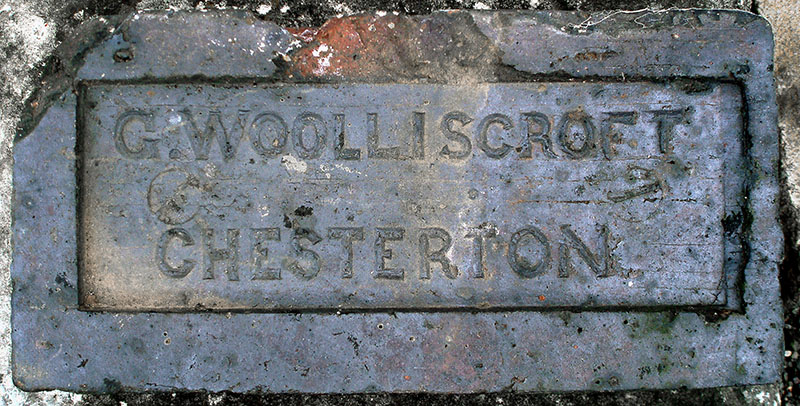
George Woolliscroft first appears in the trade directories in 1865 as a beerseller and brick & tile manufacturer at the Eagle and Child Inn in Chesterton. By 1868 he was also listed as a builder and manufacturer of blue bricks, chimney tops, drain pipes, roofing ridge & pressed floor tiles. He had expanded his interest by 1878 to include grocer and draper! In 1879 there was the appearance of George Woolliscroft and Son at Etruria. The Chesterton side of the business had been added by 1884 and in 1889 the firm is listed as having premises at Canal Tileries, Etruria, Patent Tile Works Hanley and Joiners Square. In 1904 the business is listed as George Woolliscroft & Son Limited, Melville St, Hanley; Chesterton; & Canal Tileries Etruria. The Melville Street premises continued in use producing tiles until quite recently and was demolished in 2009. Photo by Frank Lawson.
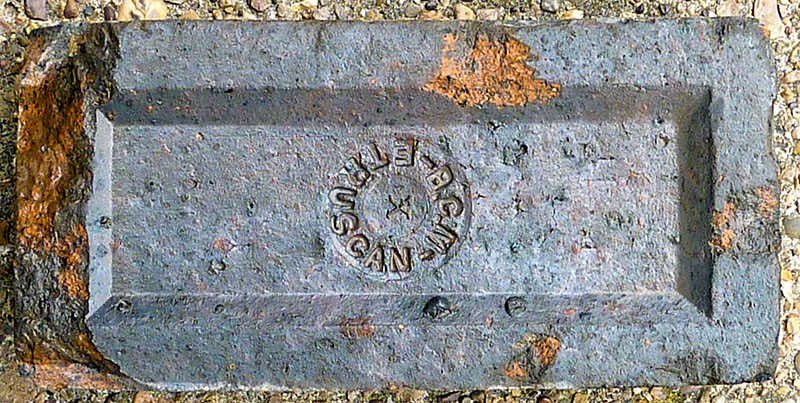
BCM Etruscan was a trade name for George Woolliscroft & Son. He produced blue bricks from 1868. More history of this company can be read here: http://www.thepotteries.org/potworks_wk/146.htm . BCM refers to British Commercial Monomarks, a company formed in 1925 to provide manufacturers with a London address and mail forwarding service. Photo by David Kitching
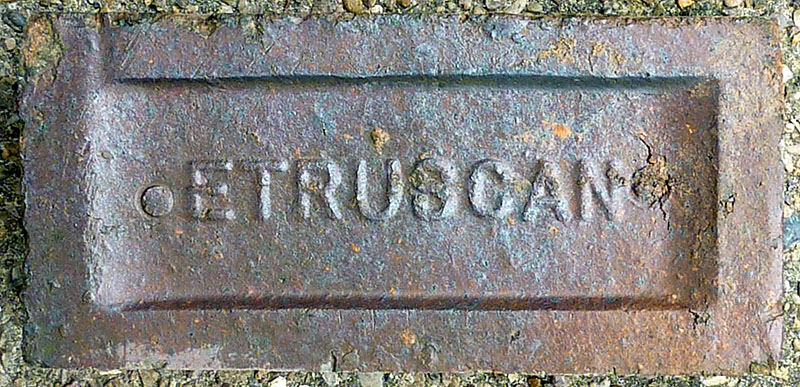
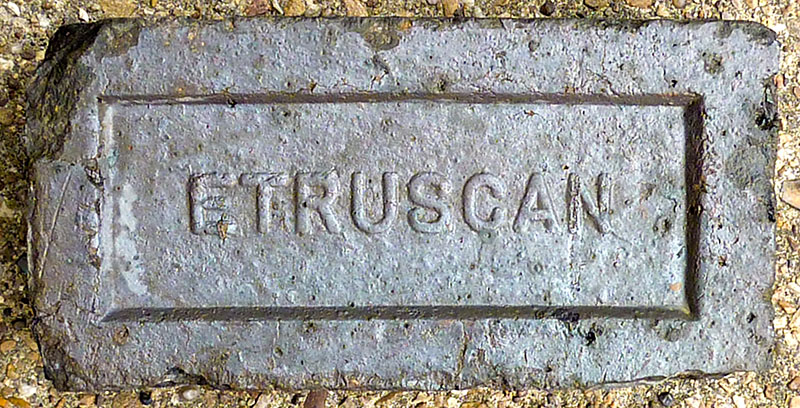
Photos by Martyn Fretwell.
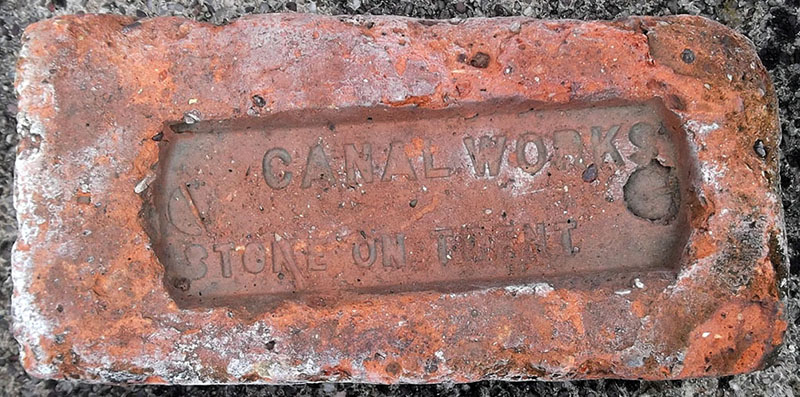
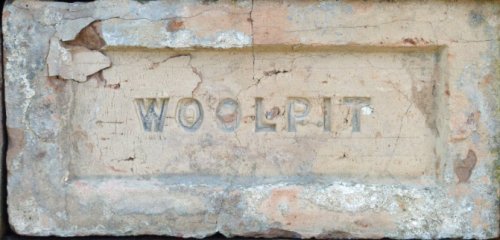
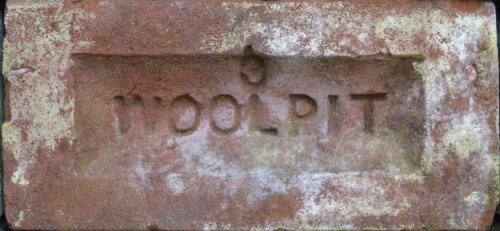
Woolpit Brick Co Ltd., Woolpit, Bury St. Edmunds Kelly's Suffolk Directory 1900 & 1912 The Company existed from 1883, when it took over the works of Thomas Plowman, until closure in 1937 Four brickmaking sites are known in Woolpit: Kiln Farm Brick Kilns, operative from 1819 to 1948; a brickworks at Kiln Lane in use between 1844 and 1916; a brickworks known variously as New Kiln or Crossways Brickworks/Brickyard, records for which show use between 1873 and 1939; and Old Kiln, Kiln Lane, first recorded in 1573 and in use until at least 1892. The Kiln Farm Brick Kilns operated under the name Woolpit Brick & Tile Company Limited between 1883 and 1937 and as Suffolk Brickworks (Woolpit) Ltd from 1937 to 1948 when it closed. More can be read at this link. Info by Frank Lawson & Photos by Martyn Fretwell.
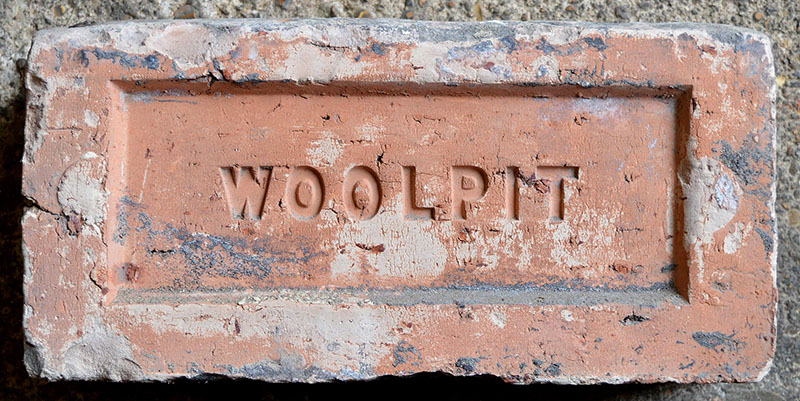
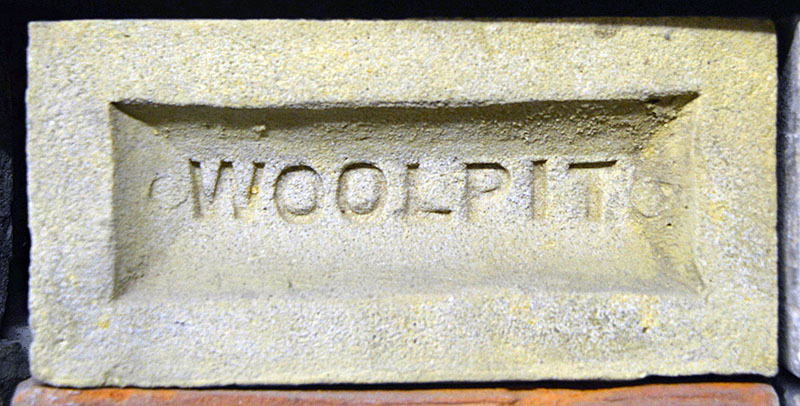
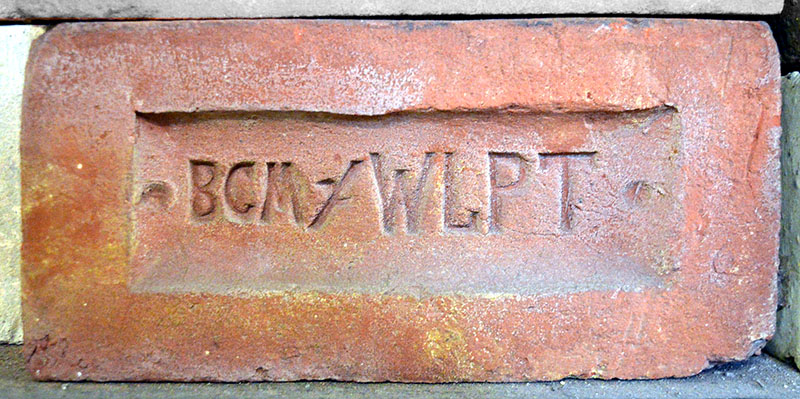
Photos by Frank Lawson.
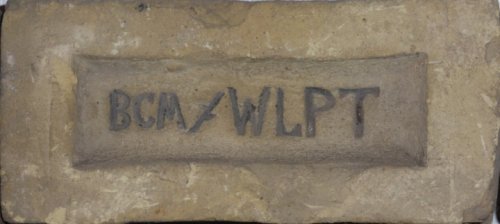
BCM stands for British Commercial Monomarks, a company formed in 1925 to provide manufacturers with a London address and mail forwarding service. Photo by Martyn Fretwell.
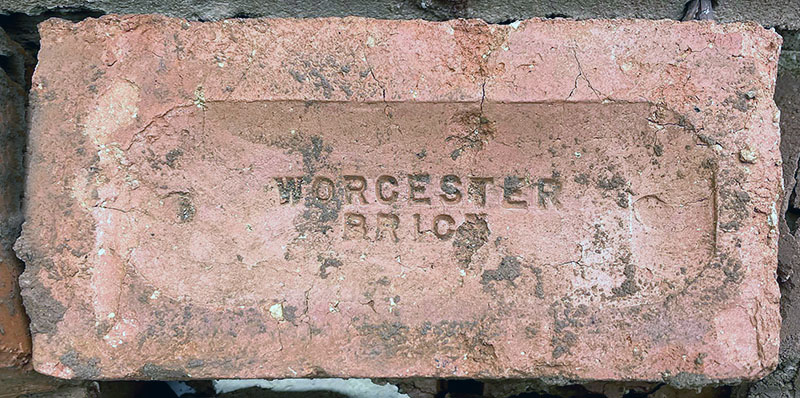
Worcester Brick & Tile Company, 1950s. Photo by Don Whitehouse.
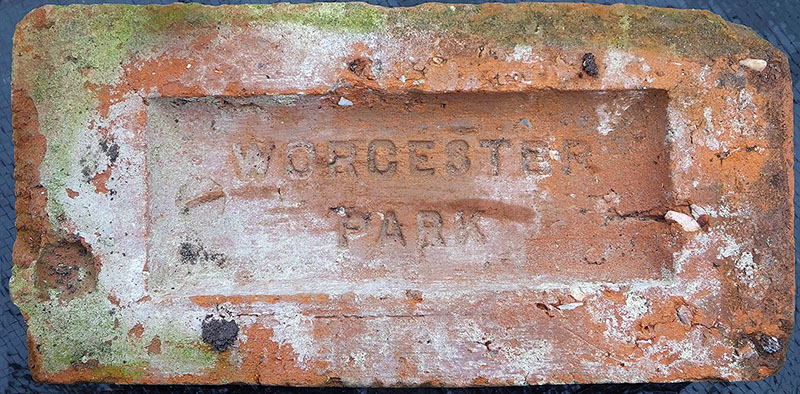
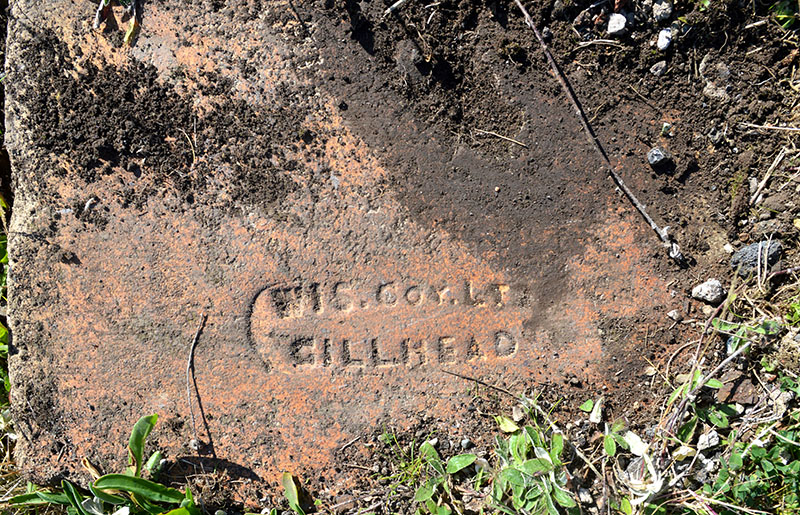
Photo by Richard Cornish.
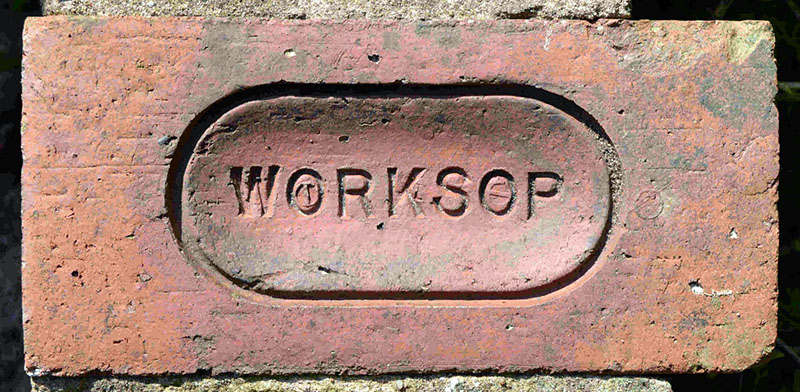
The Worksop Brick Co. is listed in Kelly's 1904 to 1928 editions at
Shireoaks Road, Worksop. The Low Grounds brick works was operated from before 1904 & from 1911
it produced silica bricks & linings for the coal mining
industry. The works changed its name to General Refactories Ltd. in
1929. Info by Martyn Fretwell, photo by Frank Lawson.
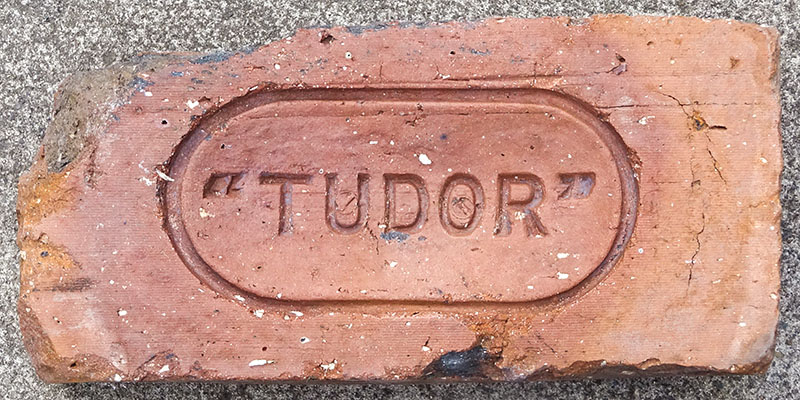
This was found at the site of Worksop brick yard and the similarities with the brick above suggest that this was also made there. Photo by Scochki Kolasinac.
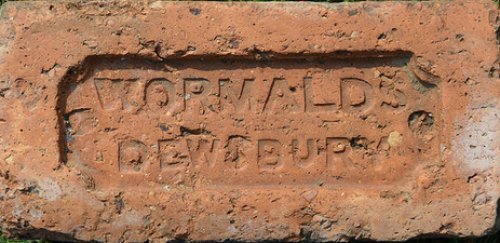
William Ingham & Sons, Wortley Fireclay Works, Leeds William Ingham (1791-1871) was the owner of Ingham's Brick Works, Wortley, which was absorbed into the Leeds Fireclay Company by 1916.
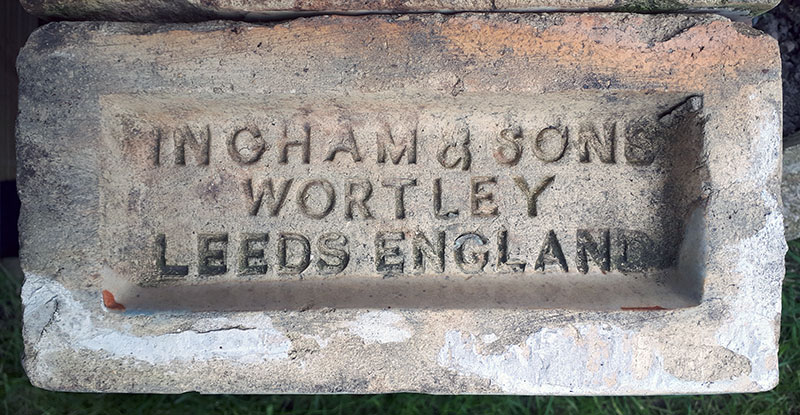
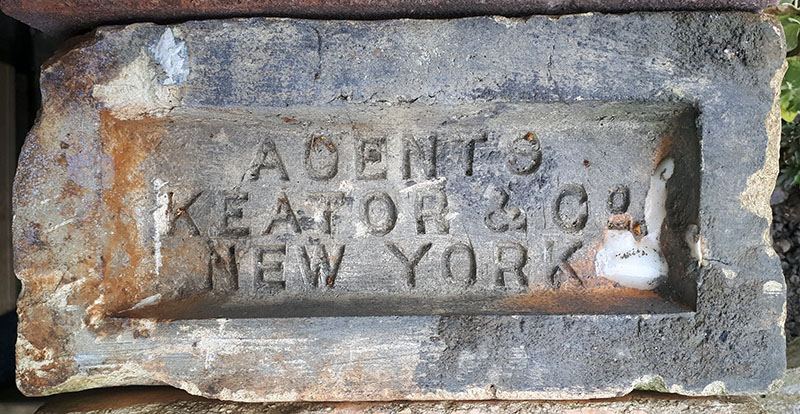
Two sides of the same brick; it is very unusual to have the agents name stamped into a brick. Photo by Paul Davies.
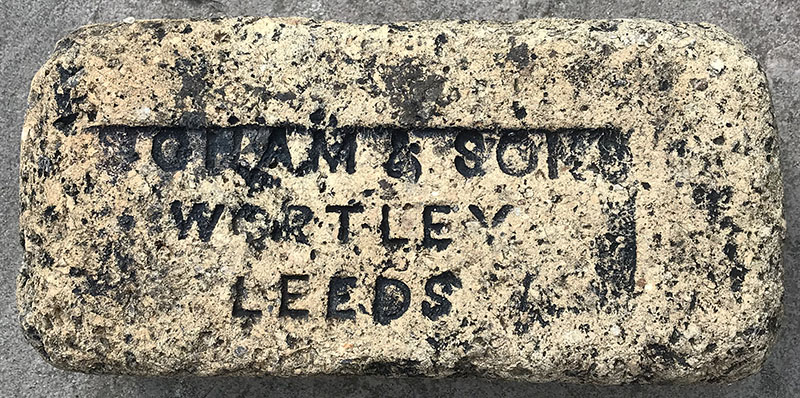
Photo by Charles Hindmarsh.
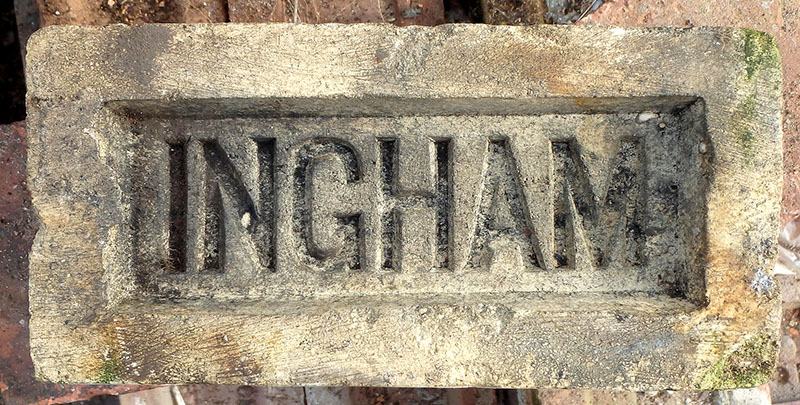
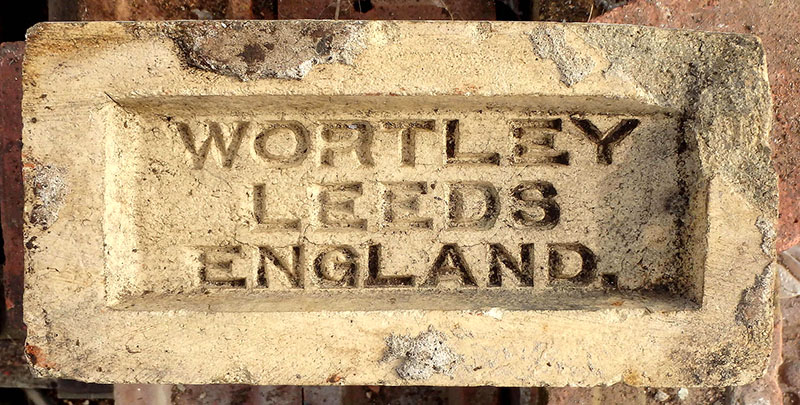
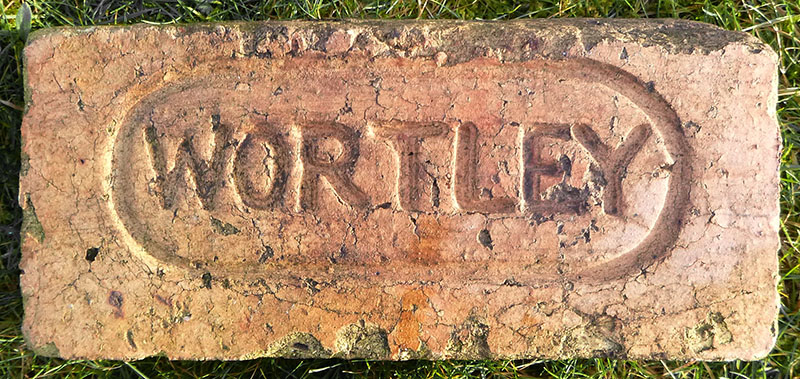
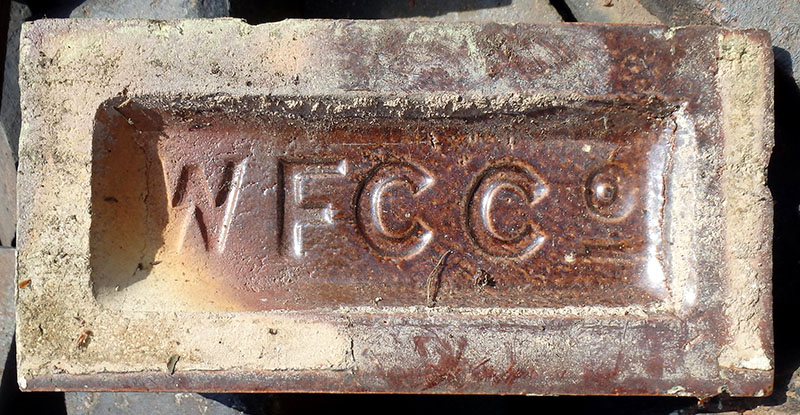
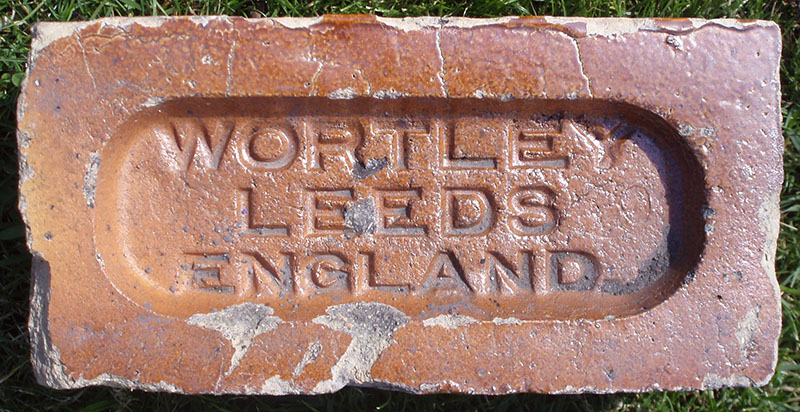
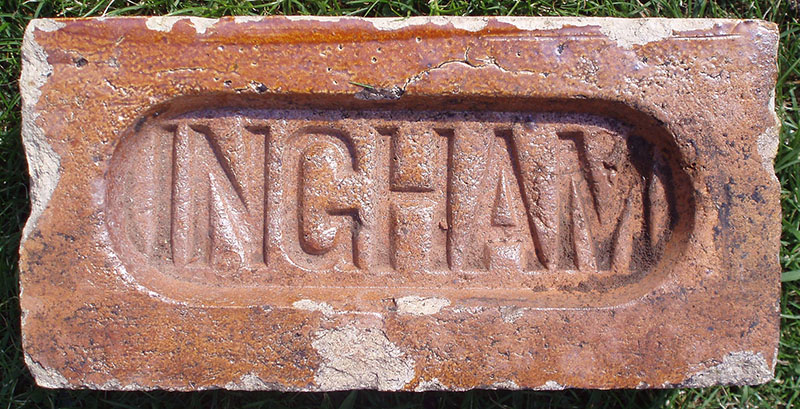
The reverse side of a Wortley brick.

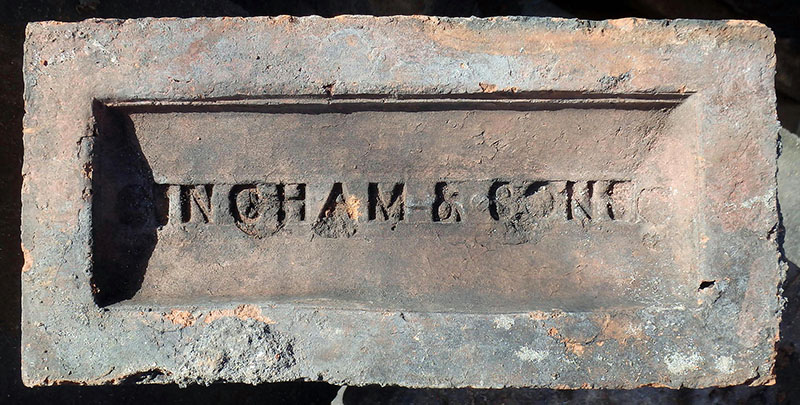
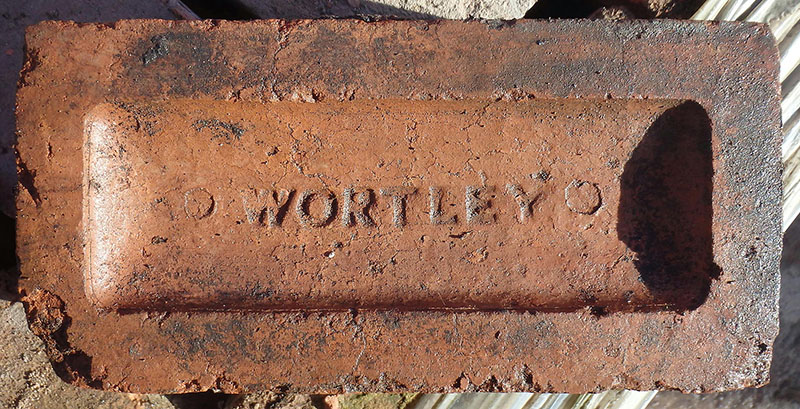
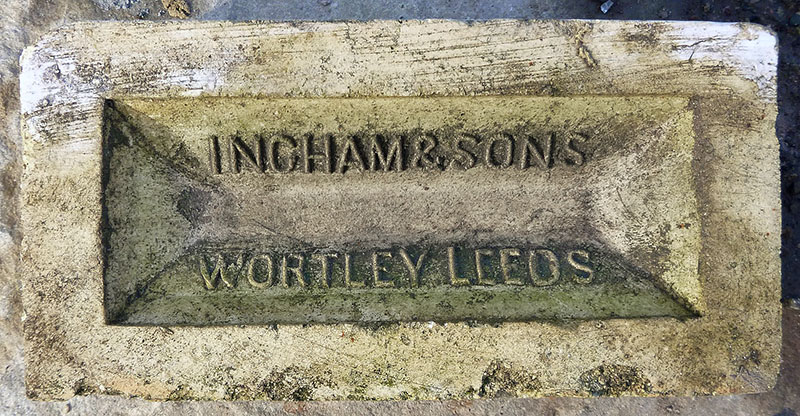
Photos by Frank Lawson.
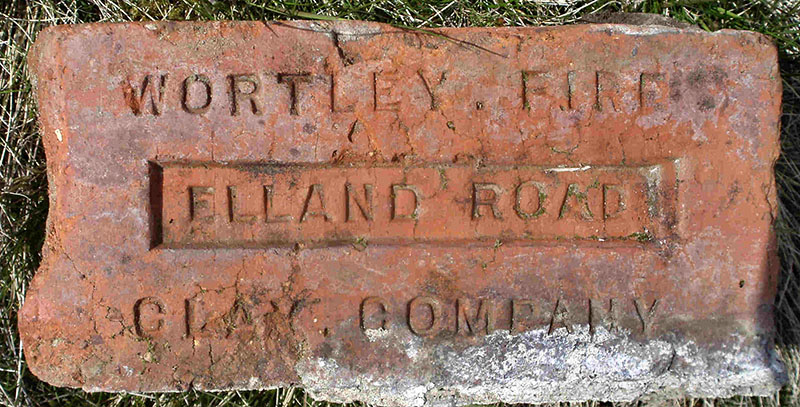
Photo by Phil Burgoyne.
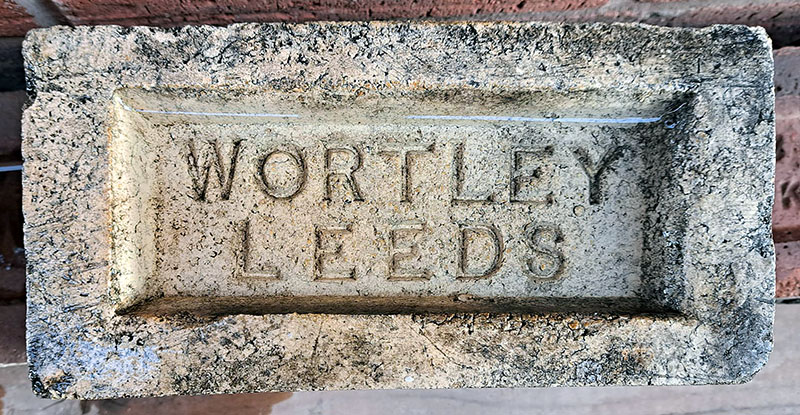
Photo by Stuart Harrington.
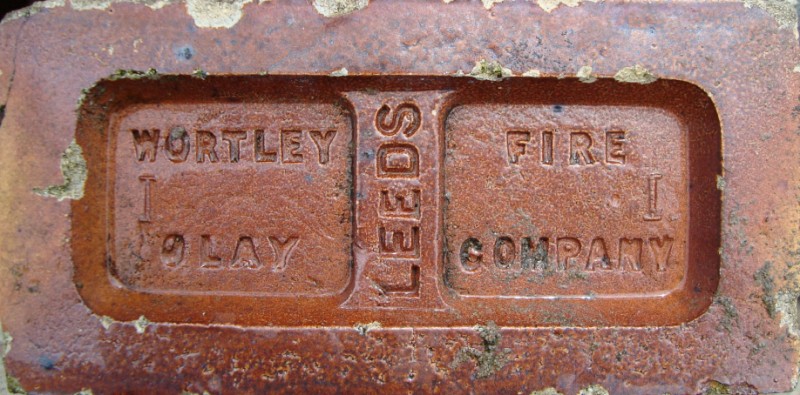
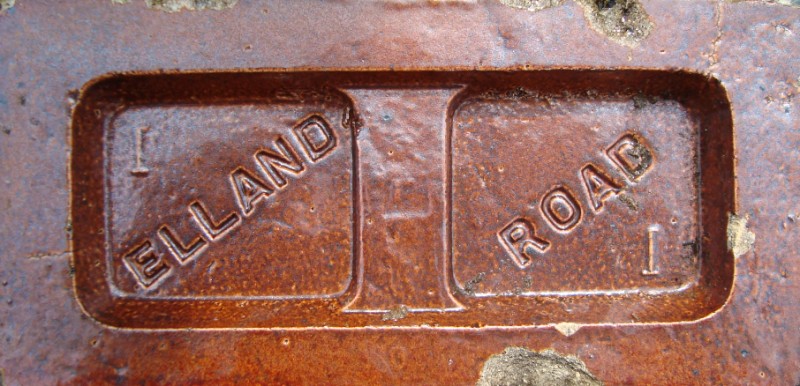
The front and back of a Wortley Brick, sent by Simon Patterson. Found near the site of L.D. & E.C. Spinkhill Station.
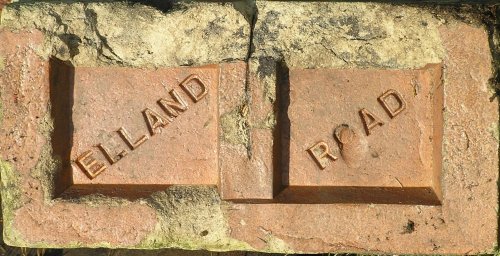
Photographed at Macclesfield Reclamation yard by Martyn
Fretwell
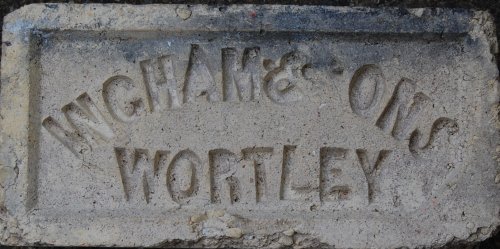
Found at Ashton under Lyne, image PRBCO
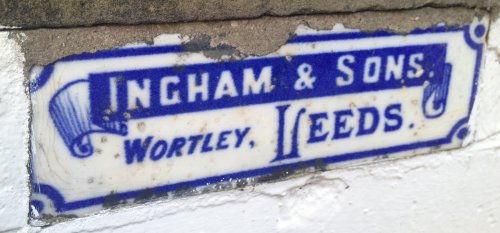
Photo taken at Knaresborough station by Melanie Harriman.
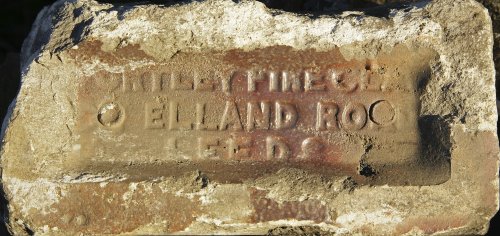
Found in the Osmondthorpe Lane area of Leeds by David
Soulsby.
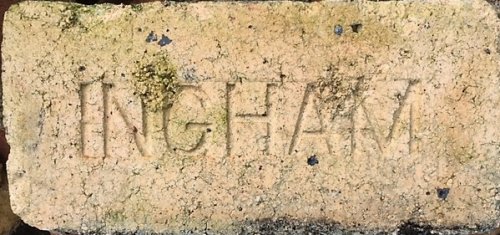
Spotted on a demolition site in Harrogate by Nigel Megson.
A Leeds based company, but one whose products are also commonly seen in the Bradford area. The company was founded by William Ingham in 1825 and later included his sons: Robert, Henry and Frederic. The firm extracted the triad of coal, ironstone and fireclay from its property at Wortley. The fireclay site alone covered 7 acres and employed 400-500 people. The company manufactured most imaginable fireclay products but these included 'firebricks, blast and other furnace lumps'. After 1889 they formed part of the Leeds Fireclay Co. Thanks to Derek Barker for the information.
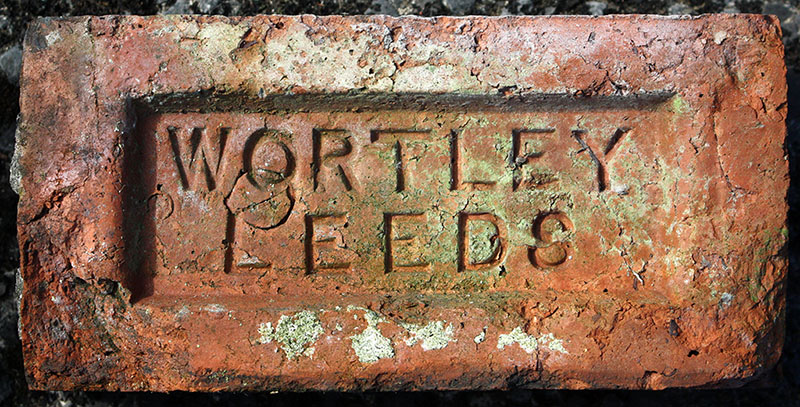
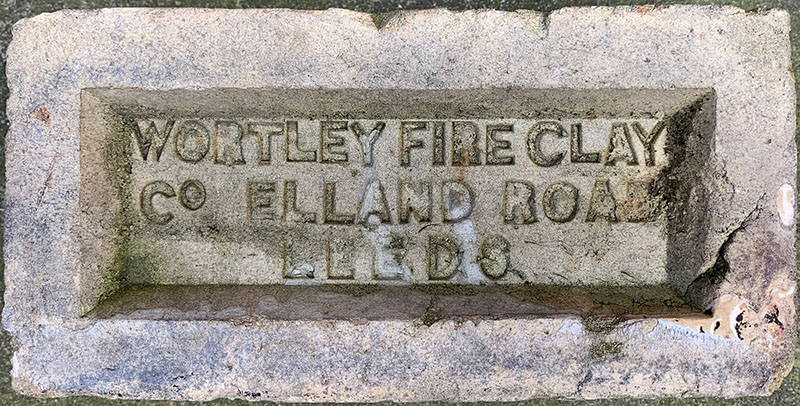
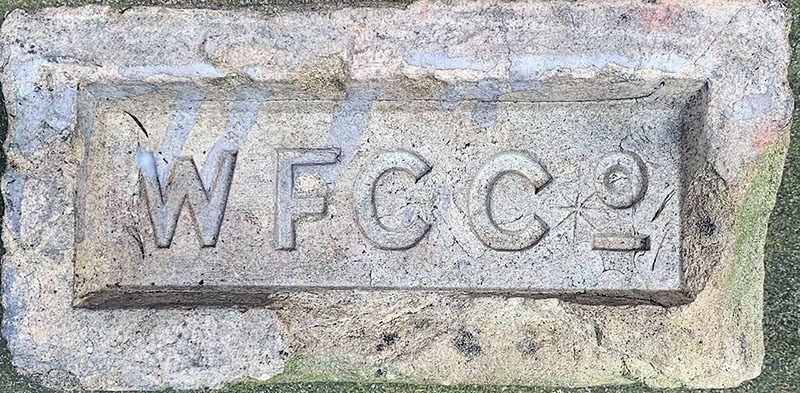
Photos by Russell Firth.
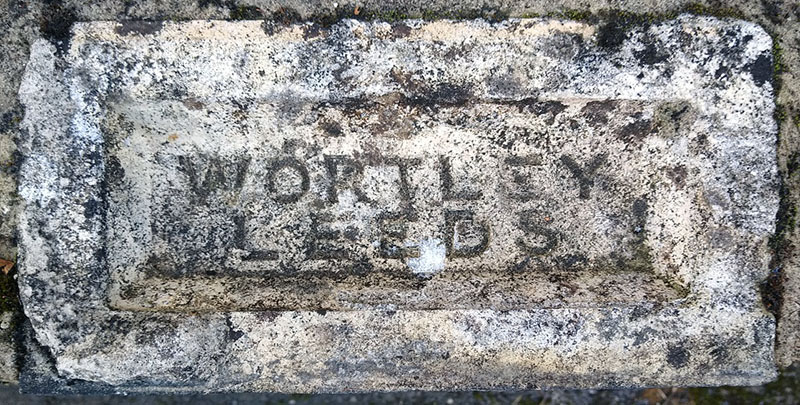
Photo by Don Boldison.
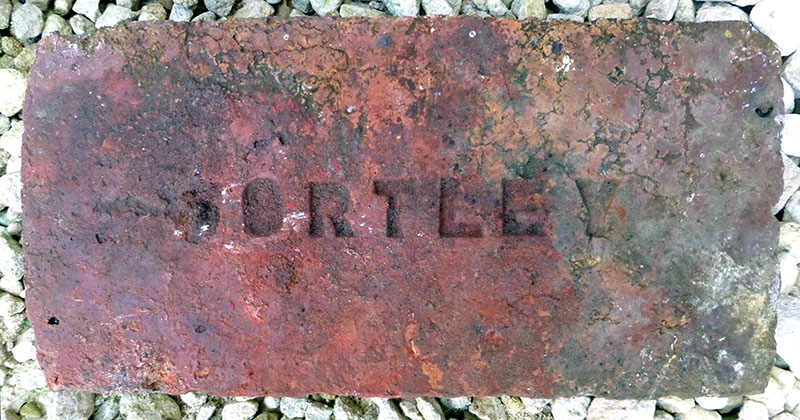
Photo by Una Longson.
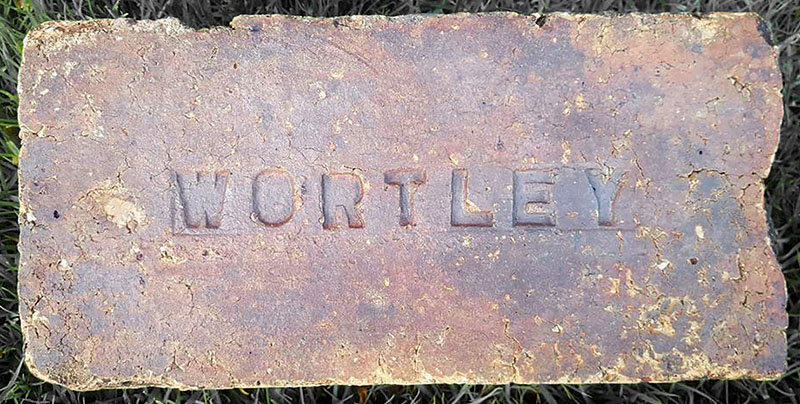
Photo by Jason Stott.

Photo by Carla van Beveren.
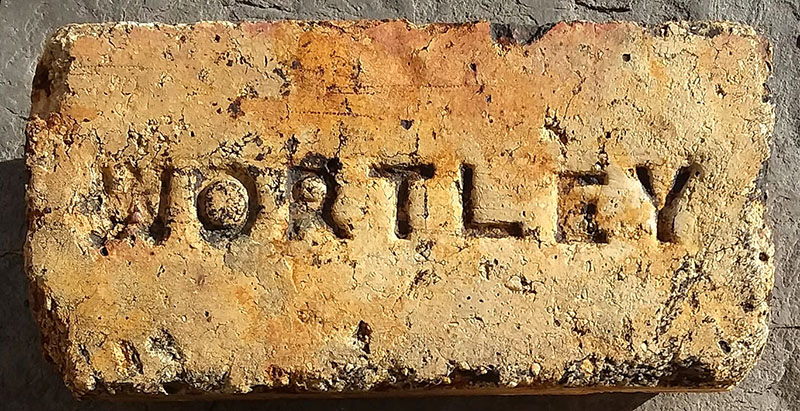
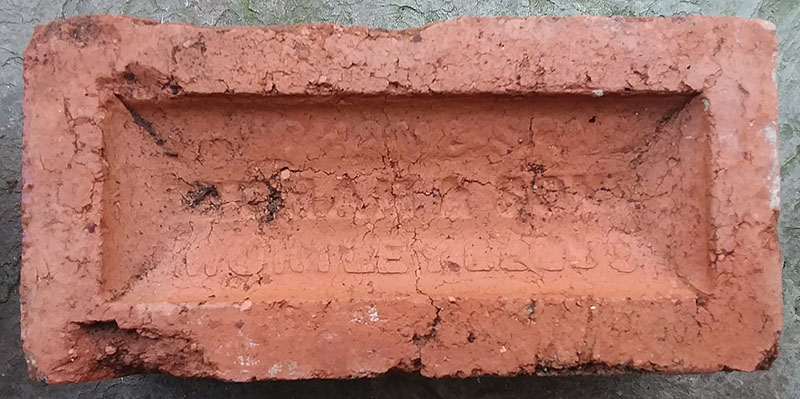
Photos by David Fox.
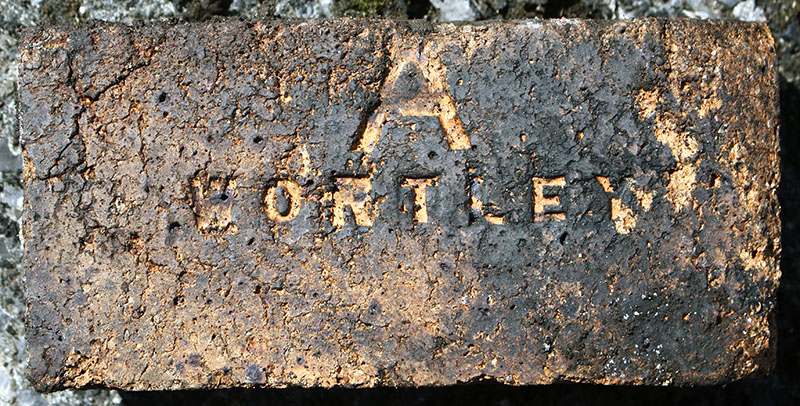
Photo by David Kitching.
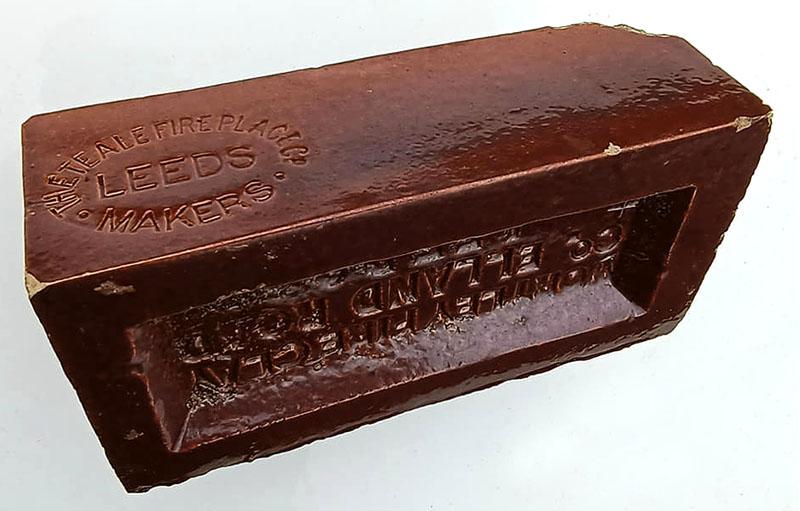
Glazed Wortley brick also stamped for the Teale Fire Place Co of Leeds. 1890 Teale & Somers, The Teale Fire-Place Co, 46 & 48 Woodhouse Lane, Leeds, 1903 at the Silver Royd Works, Wortley, Leeds. Photo by Chris Tilney.
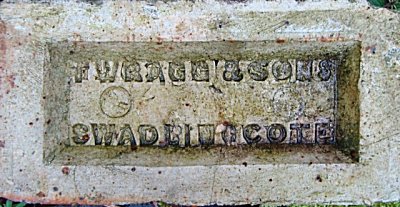
This is a salt glazed brick found at the site of Teversal railway station and may have been part of a toilet wall, also the name was pressed into both frogs. Thanks to Simon Patterson.
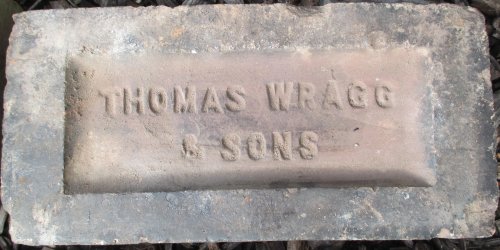
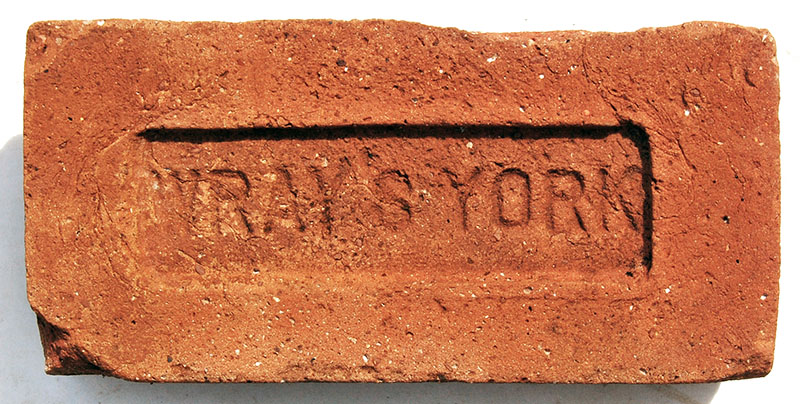
Listed at East Huntington, York in Kelly 1897 and operating until the late 1960's, info and image PRBCO
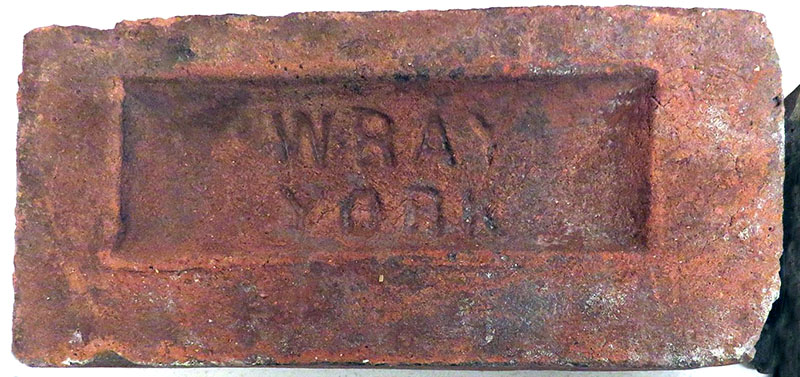
This page
has it that Wray & Moss were operating in York and environs from
1893, but then mainly Wray & Sons to at least 1955. Their first address at Hilda Street off
Lawrence Street was at the south end of a complex of brickyards on
Hall Fields. Photo and info by Leslie Waby.
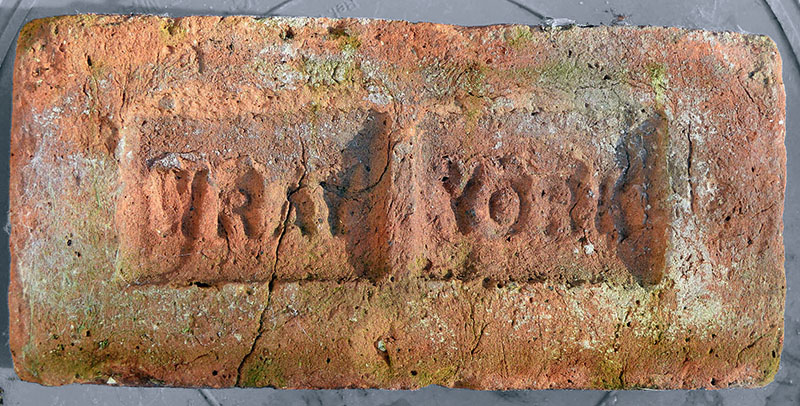
Photo by Frank Lawson.
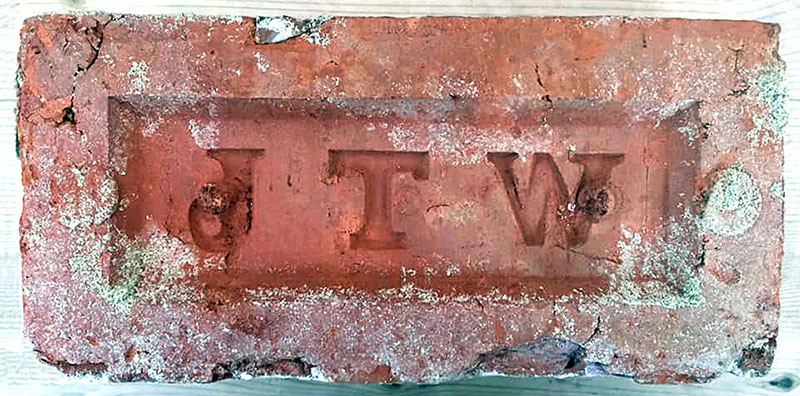
Photo by Billy Wheeler.
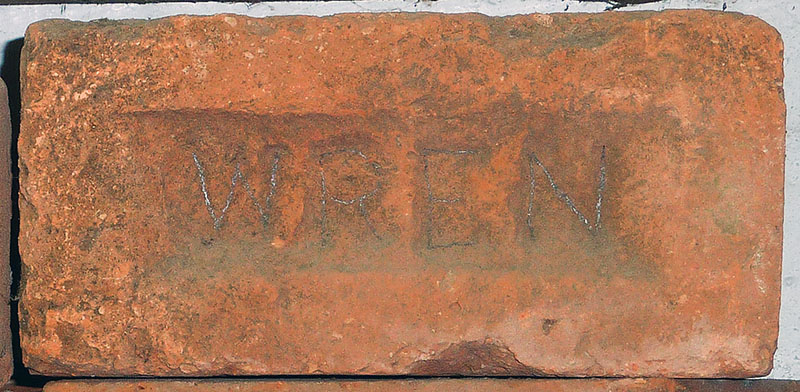
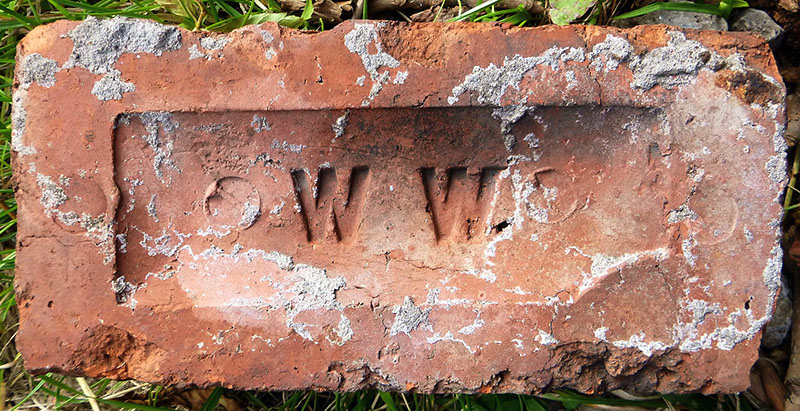
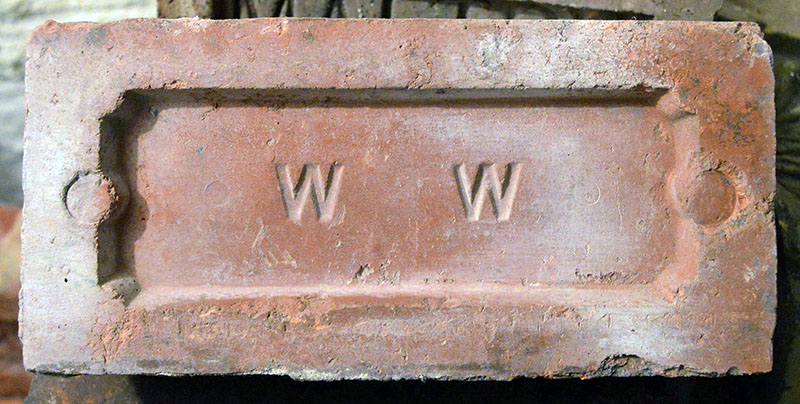
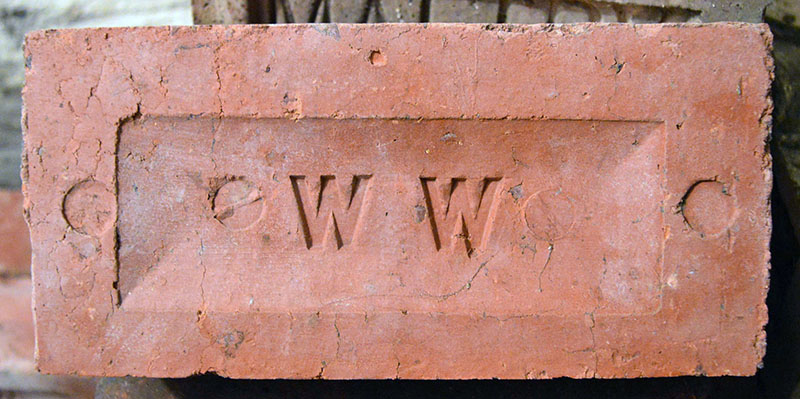
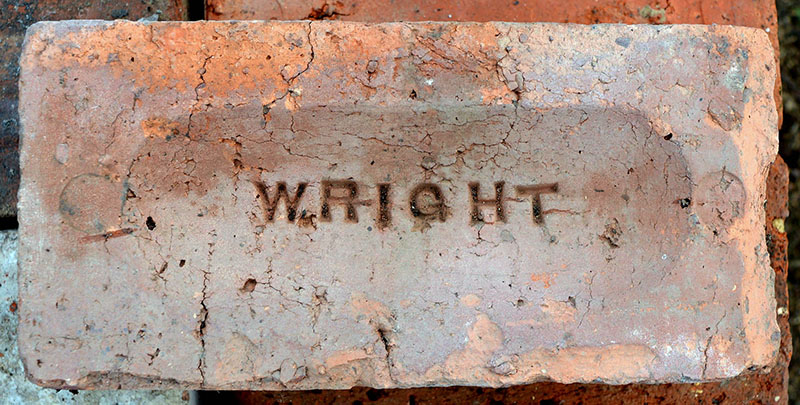
William Wright, Kettle Bridge Brick Works, Ribston Road, Attercliffe, Sheffield. White's Sheffield & Rotherham Directory 1908. Photos and info by courtesy of the Frank Lawson collection.
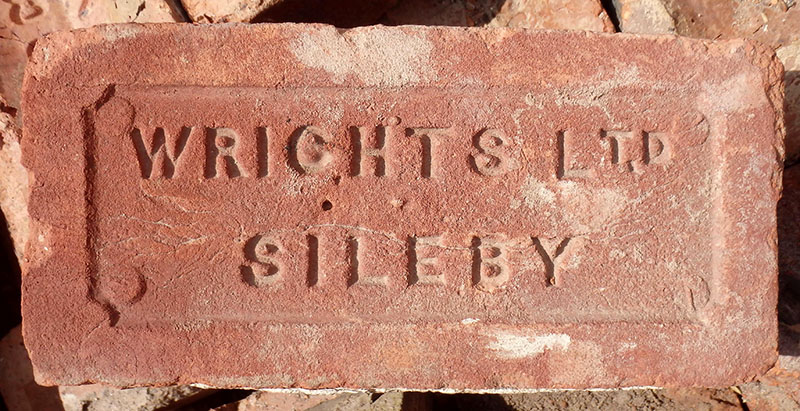
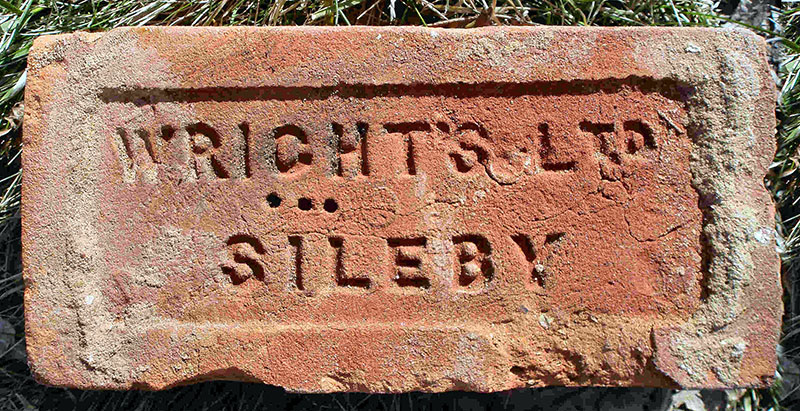
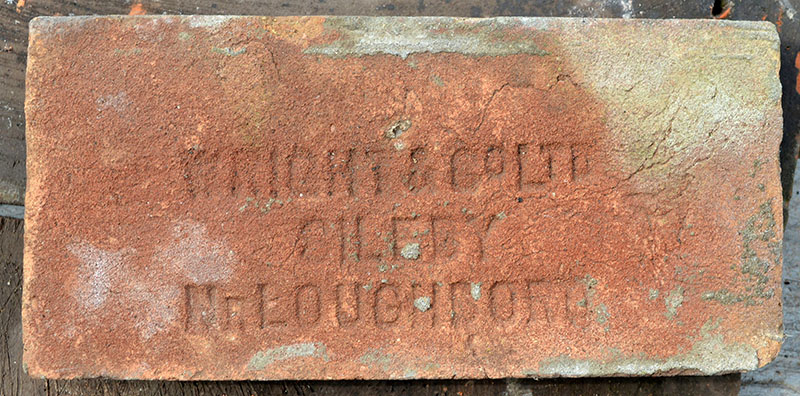
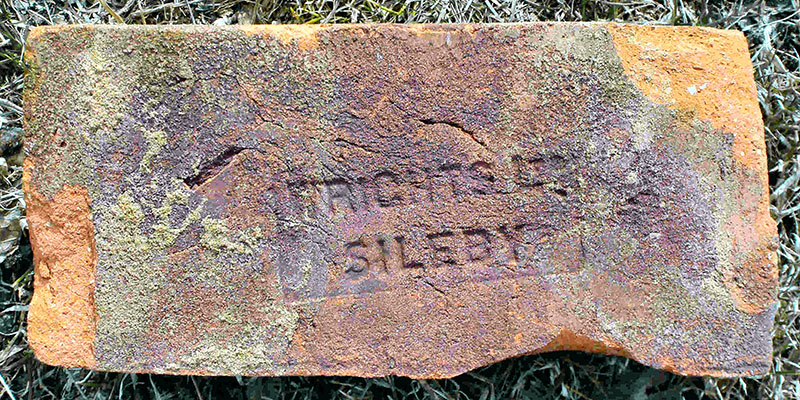
Martyn
Fretwell writes: The owner was William Tucker Wright.
He introduced large scale clay extraction and brick/tile
production, where previously it was done on a small scale by
individuals in Sileby. His bricks were used to build St.
Pancras Railway Station in London. http://www.sileby-village.co.uk/Potted-History.htm
Photos by Frank Lawson.
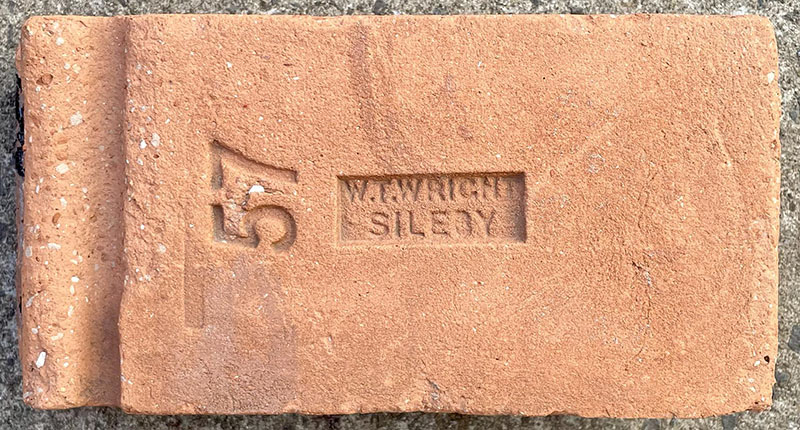
Photo by Phil Burgoyne.
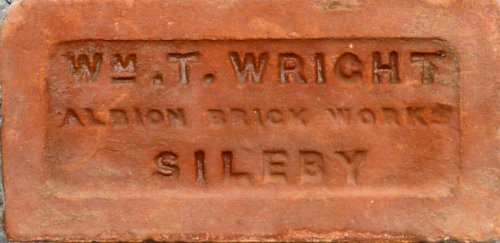
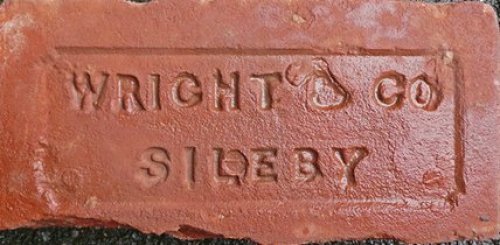
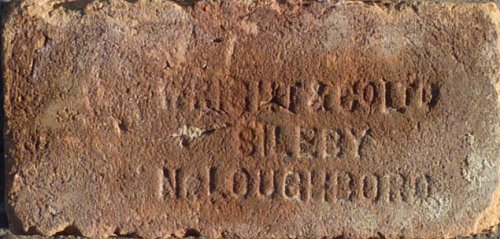
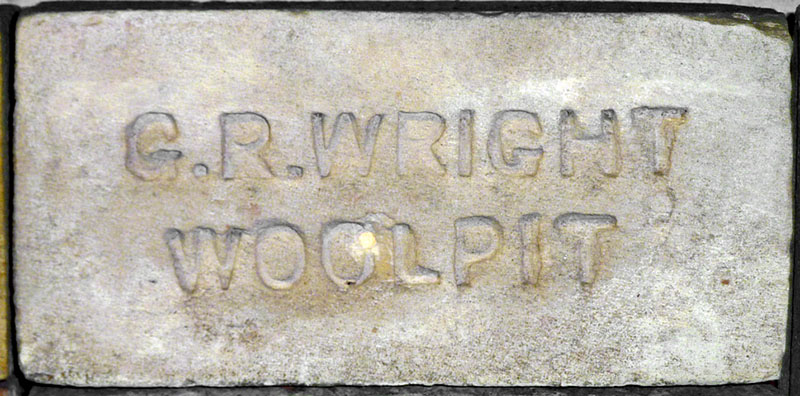
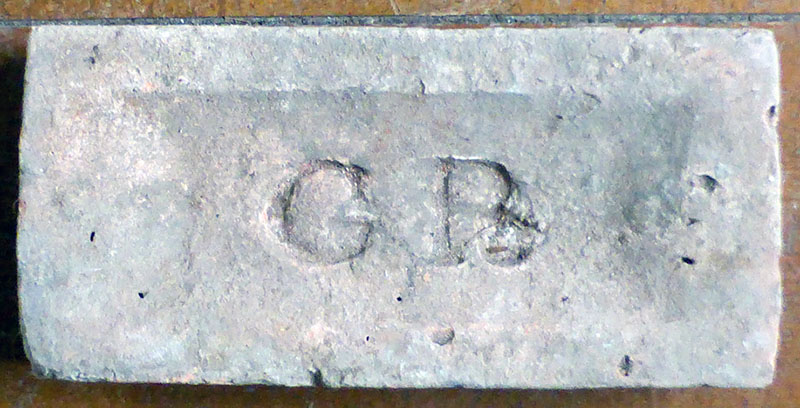
George Reuben Wright owned two yards on Kiln Lane, Woolpit, Suffolk. One was
known as the “Old Kiln" yard (Grid ref. TL984628), situated on the south side of Kiln Lane & had
been taken over by the Wright family in 1844, with it closing in 1892. The second yard (Grid ref. TL986626) on the north side of Kiln Lane & listed as Elmswell in trade directories was started in
1844 & closed in 1916 under the company name of George Wright & Son. From info found several of
George Reuben’s family, some of whom may have been his brothers were also brickmakers at these two
yards with him, these were John, Thomas, George B, Reuben & Robert Wright. Photos & Info by Martyn
Fretwell.
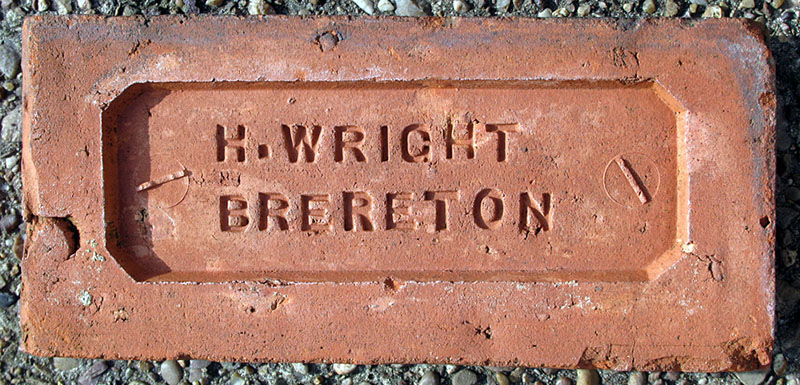
William Wright is listed as brickmaker at the Brown Edge Brickyard, Brereton, Congleton in Kelly’s 1878 edition. Sadly William died due to fever at the age of 45 in 1892. The yard was then run by his son Henry Wright & Henry is listed in Kelly’s 1896 to 1914 editions at the Brown Edge yard, Brereton. Henry’s son, John William Wright after doing several different jobs worked at his father's brick & pipe yard for six years. After which John returned to market gardening, a successful business which he ran until he was 80 years old. The year Henry Wright closed or sold the brickworks is unknown. Photo & Info by Martyn Fretwell.
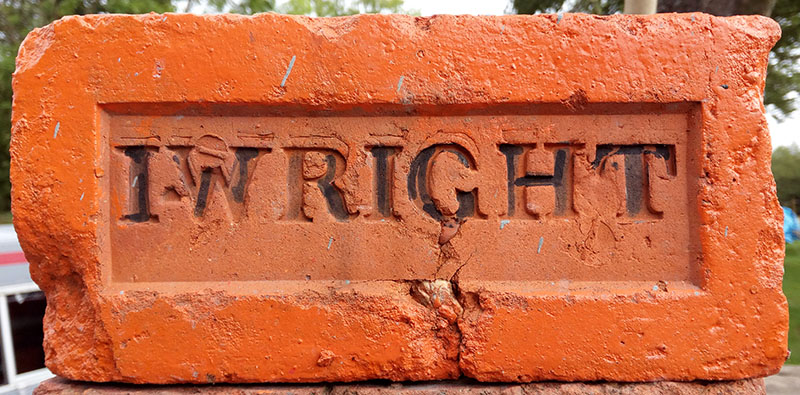
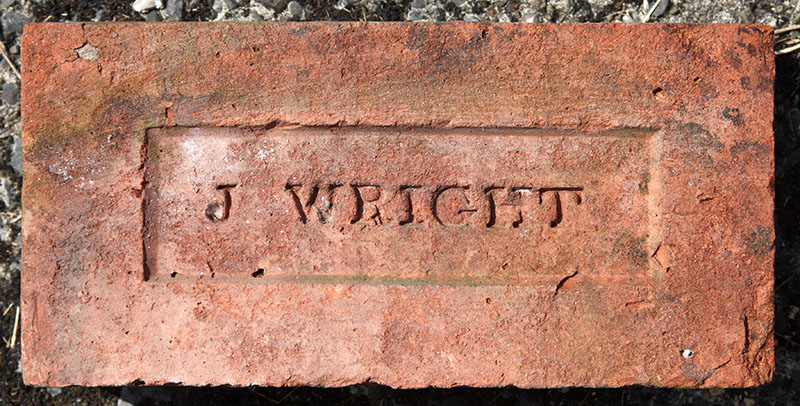
John Wright, Adswood Tile Works, Councillor Lane, Cheadle. 1871 census, Brick & Tile Maker, also Slater's Directory, 1883. Photos by David Kitching.
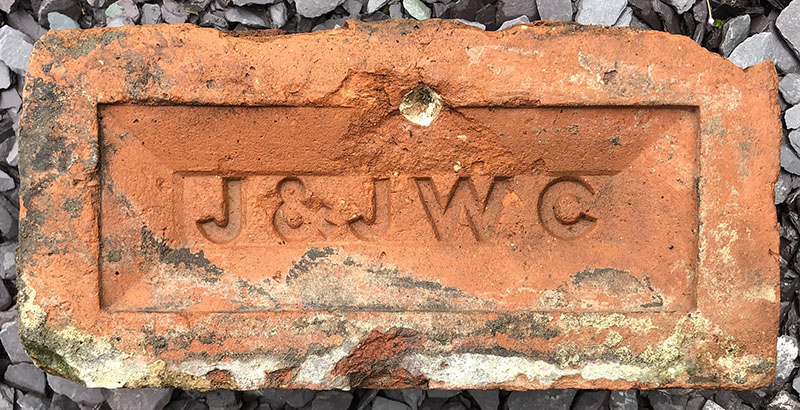
The Wrigley brothers are listed at the Chamber Road brickworks in Oldham from 1880-89. Photo by Jason Stott.
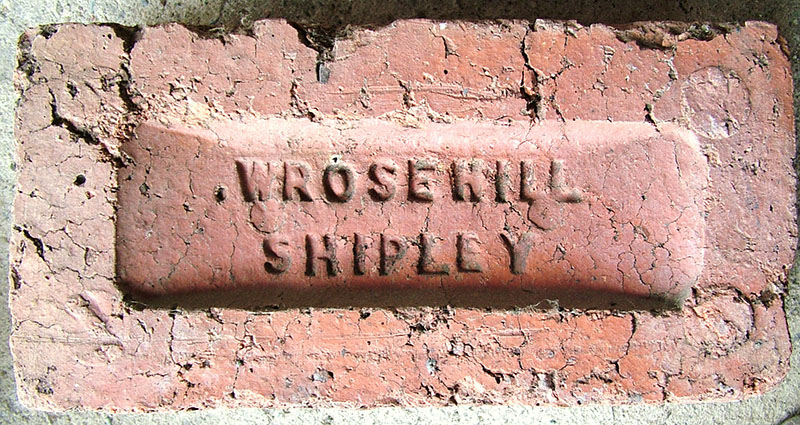
A brickworks at Wrose Hill, Windhill, Shipley, West Yorks was established in the mid-19th century where the Halifax Hard Bed coal rested on a bed of fireclay 5ft thick. As well as common bricks the works made specialist bricks, chimney pots and sanitary pipes. A Mr J.W. Woodhead owned the works in 1870 and at that time was advertising for the construction of a Hoffmann patent kiln. We know from map evidence that it was constructed. Wrose Hill bricks are common in Shipley and north Bradford. The works can also be seen on the OS maps of 1895, 1908 & 1934. In the years 1901-1927 the company owning the works known as Wrose Hill Fire Clay. A 1945 list of mines suggests that Wrose Hill was closed in July 1944. Thanks to Derek Barker for the photos and information.
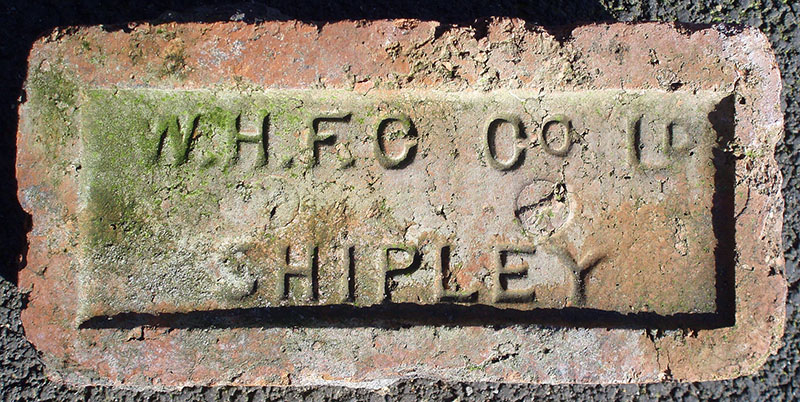
Photo by Frank Lawson.
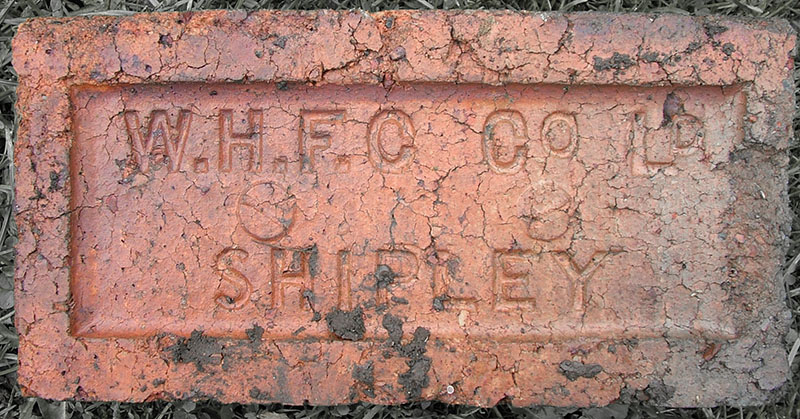
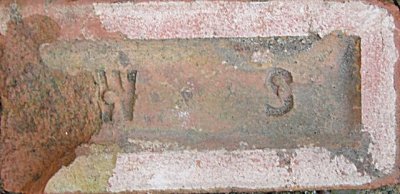
W.S. bricks were made in Accrington, Lancashire. Thanks to Simon Patterson for the photo.
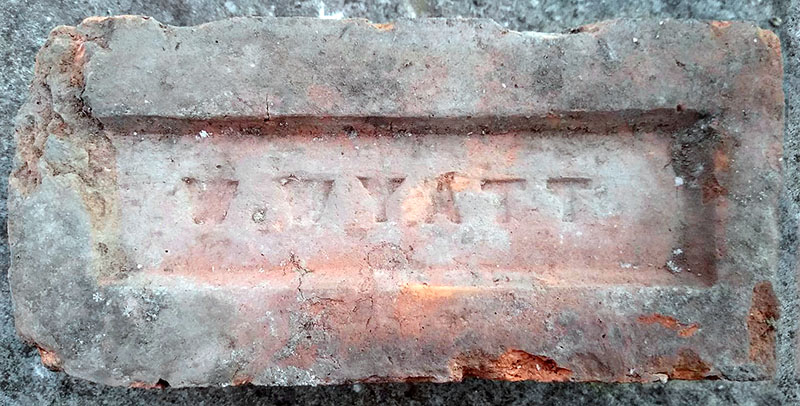
Drake's Commercial Directory of 1862 lists William Wyatt as a brick manufacturer at New Whittington. Photo by Brian Troth.
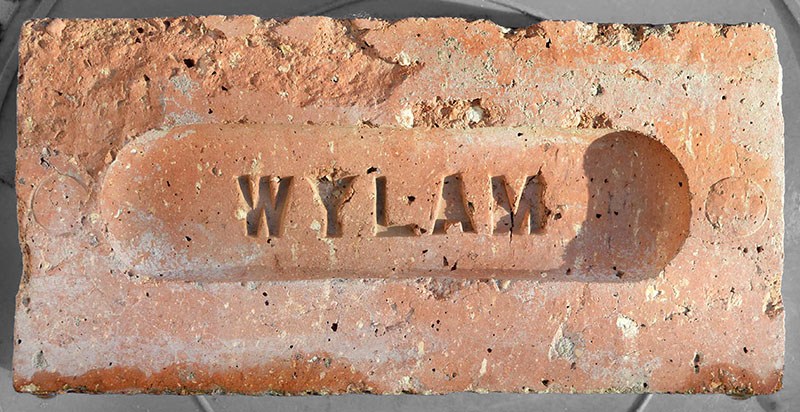
Photo by Frank Lawson.
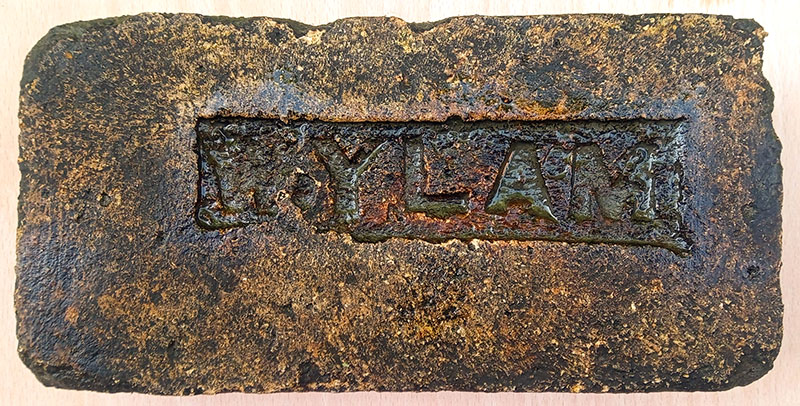
Photo by Chris Graham.
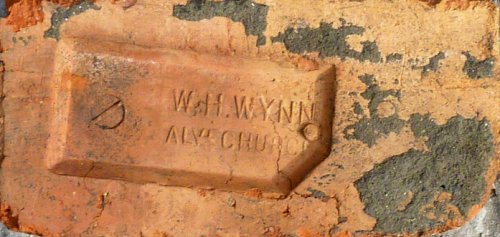
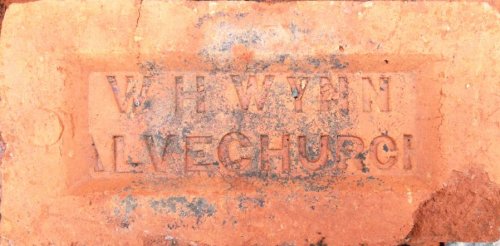
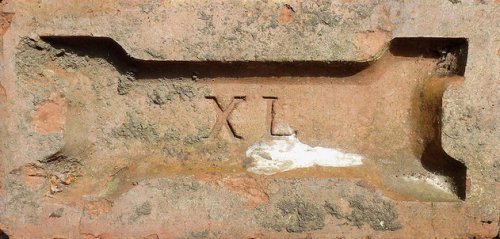
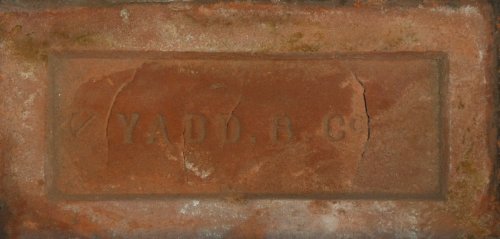
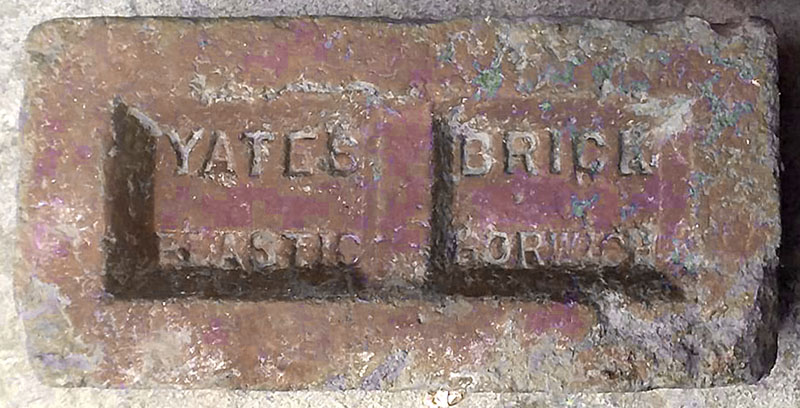
Photo by David Fox.
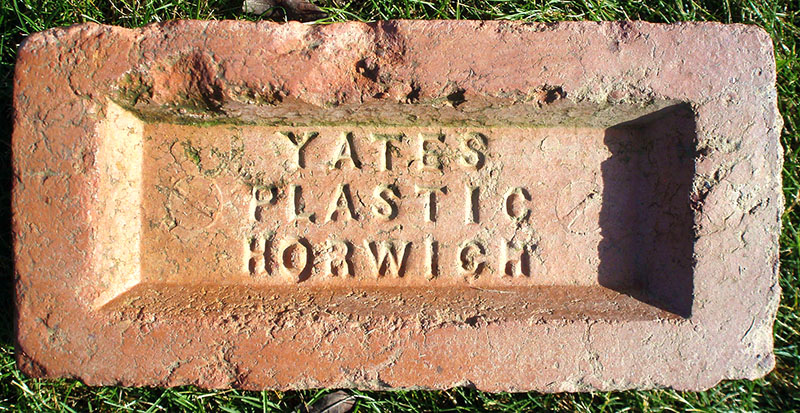
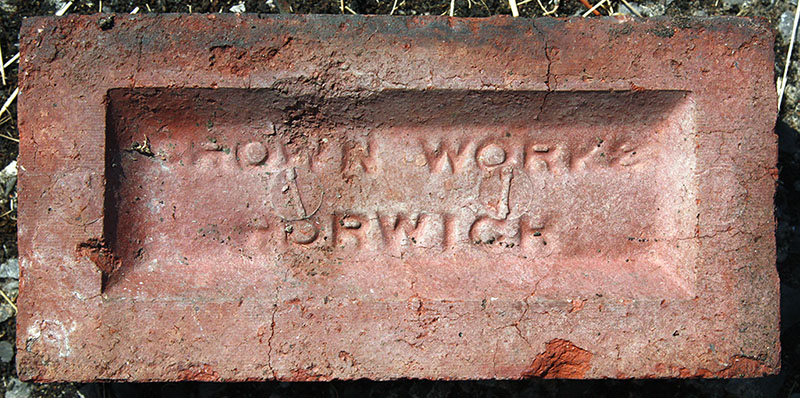
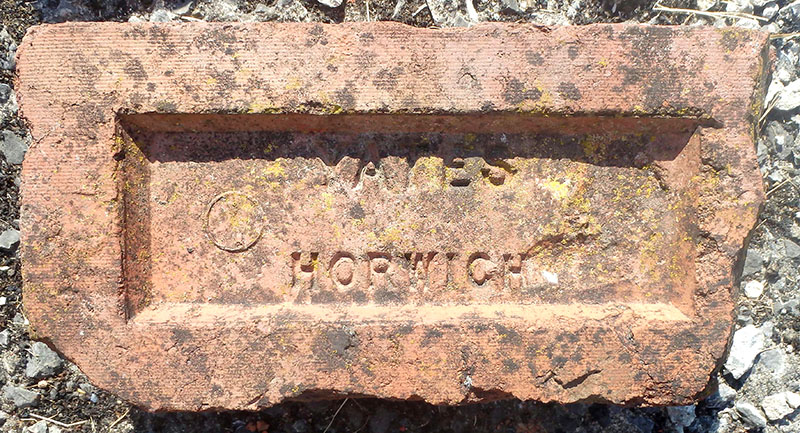
A & E Yates, Crown Brickworks, Chorley New Road, Horwich. Photos by courtesy of the Frank Lawson collection.
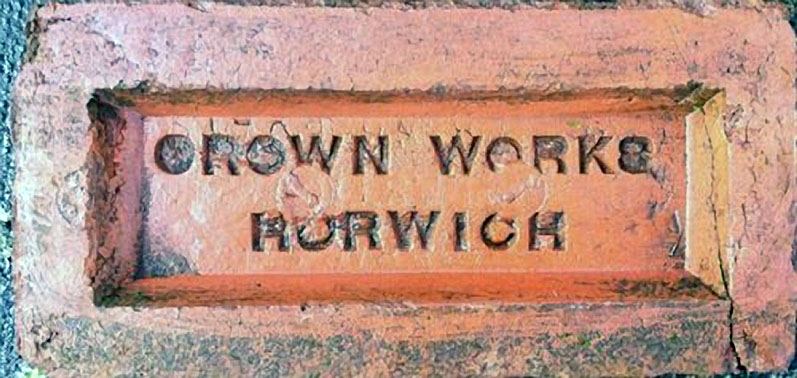
Photo by courtesy of the Colin Driver collection.
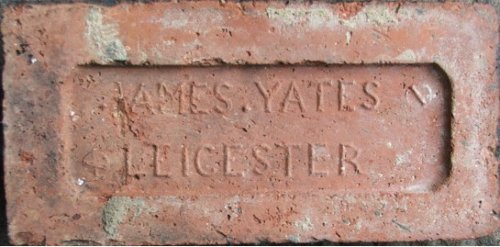
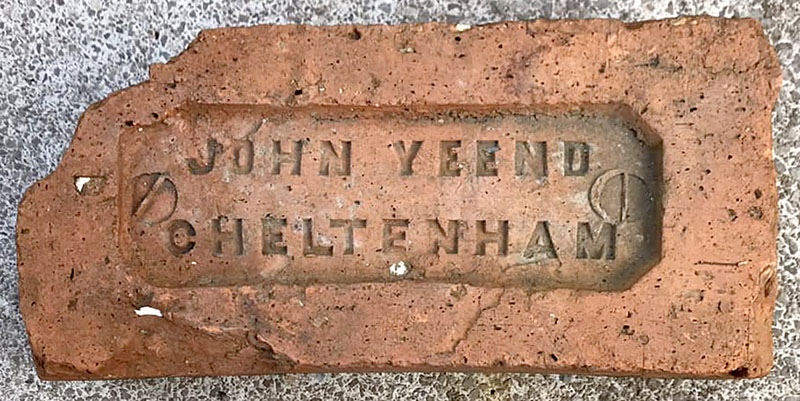
The Cheltenham Mercury, 10 December, 1881, has an advert for John Yeend, Brick, Tile, and Pottery manufacturer (by steam power), Folly Lane, Cheltenham. 1884 - pressed machine and hand-made bricks and agricultural pipes. Photo by Lewis Lockey.
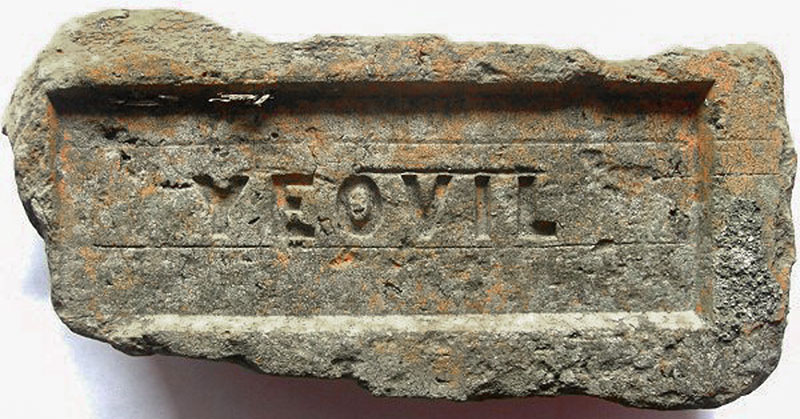
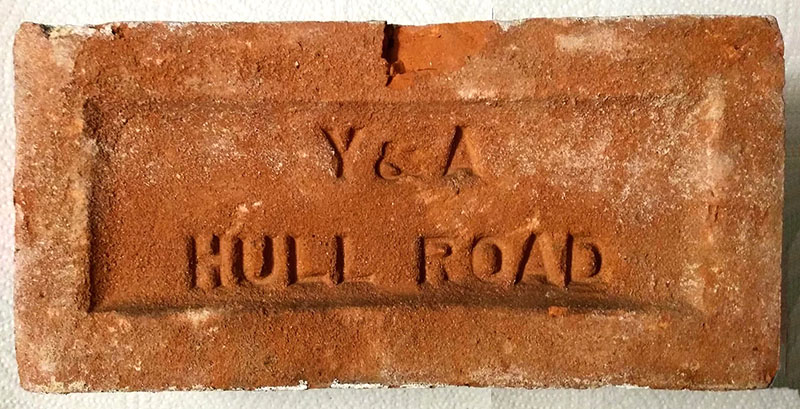
Found in Acomb, York and made by the York & Acomb brick works, Gale Lane, Acomb and the St Nicolas brick works, Hull Road, as listed in a 1939 York Directory. Info by Don Boldison, photo by Tony Gray.
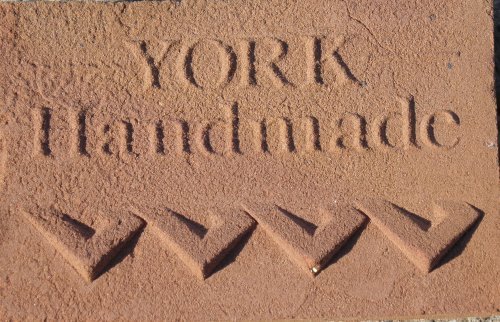
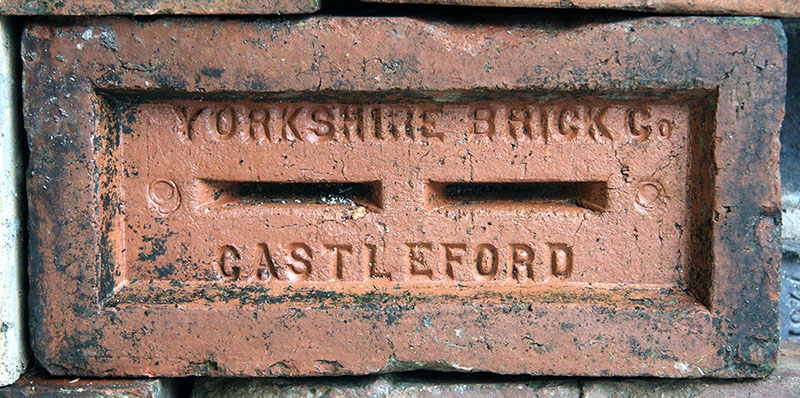
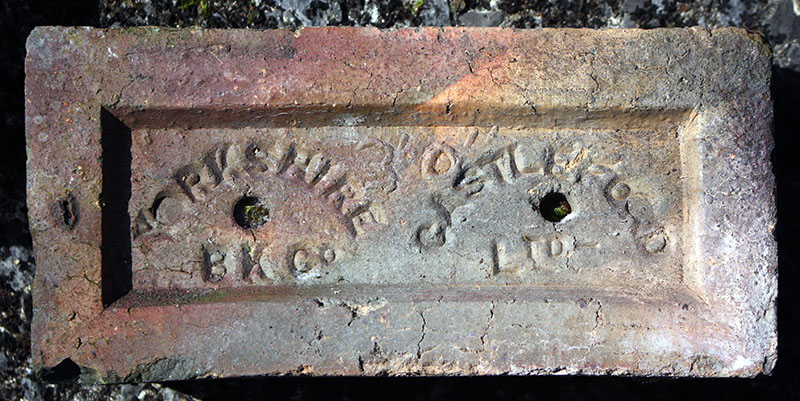
Photos by David Kitching.
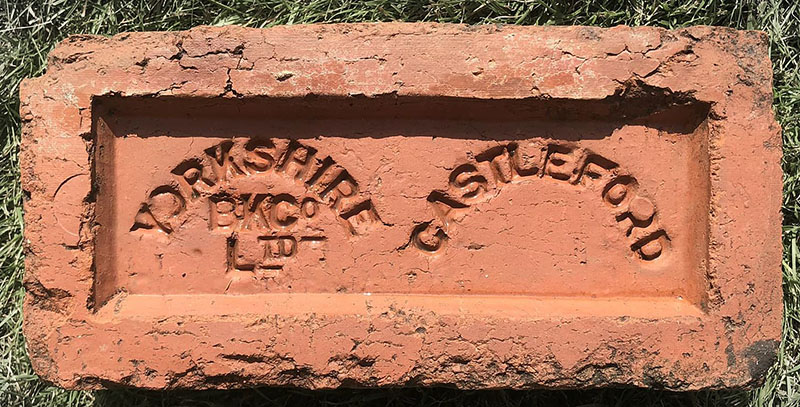
Photo by Jason Stott.
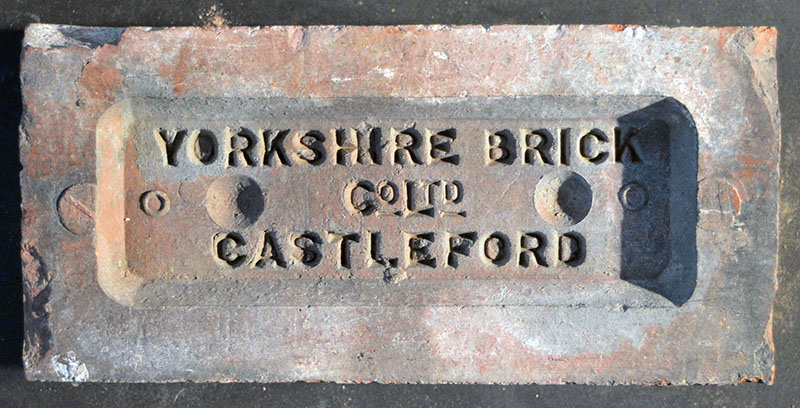
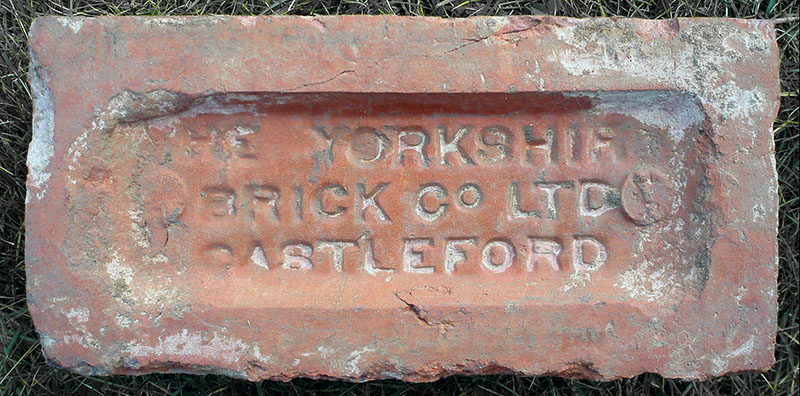
Photos by Frank Lawson.
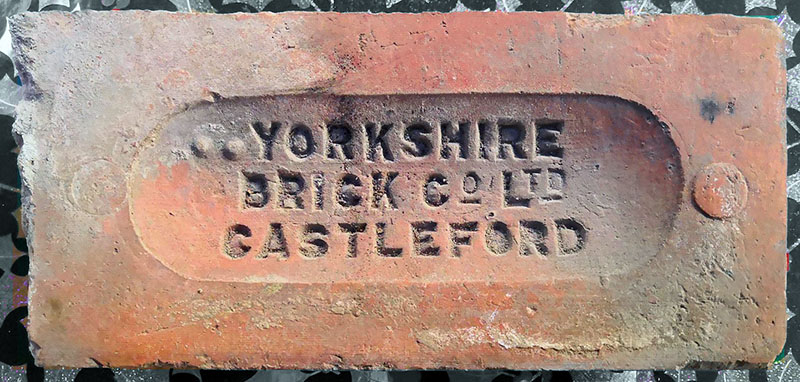
Photo by The Brickworks Museum.
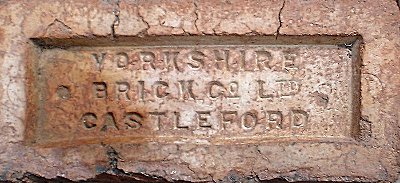
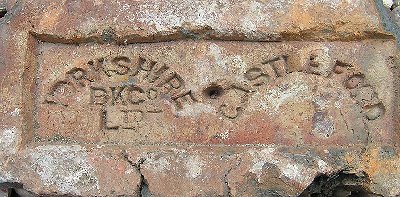
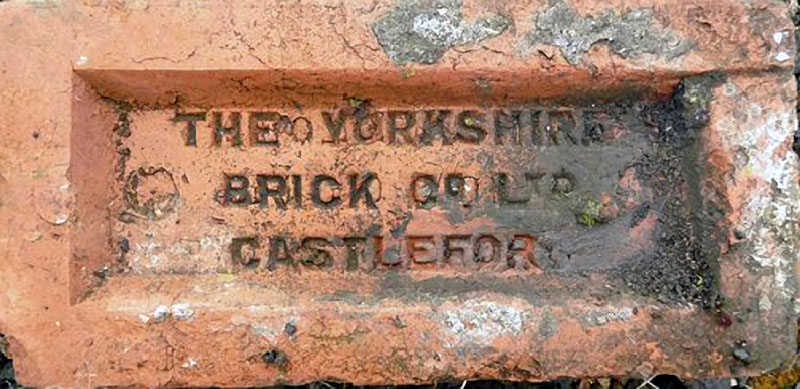
Thanks to Darren Haywood for the photo.
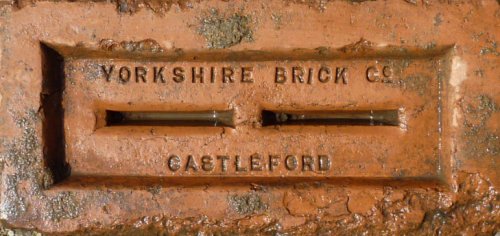
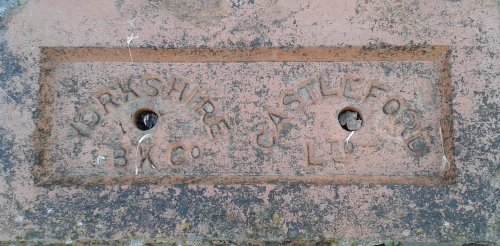
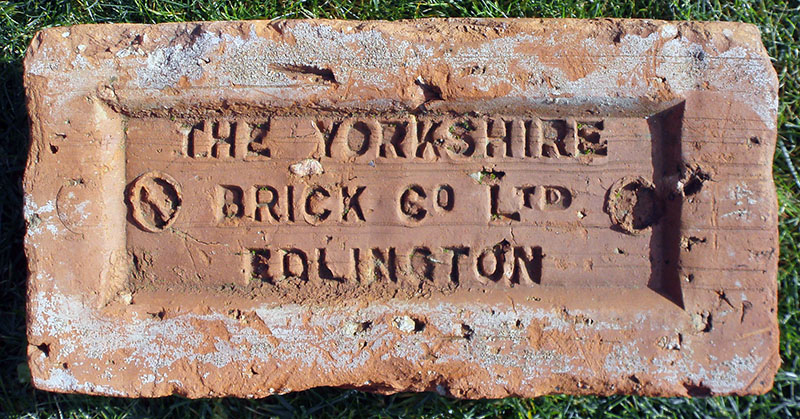
The Yorkshire Brick Co. Ltd., Edlington Brickworks, Doncaster. It seems that the works may originally have been owned by Oakland Brothers who also owned several other brickworks across West & South Yorkshire and North Lincolnshire. The works at some time passed into the hands of The Yorkshire Brick Co. There is no evidence on the 1901 6" OS map of either the brickworks or the colliery village of New Edlington. The village was built to serve Yorkshire Main Colliery which was opened in 1913. Photo by courtesy of the Frank Lawson collection.
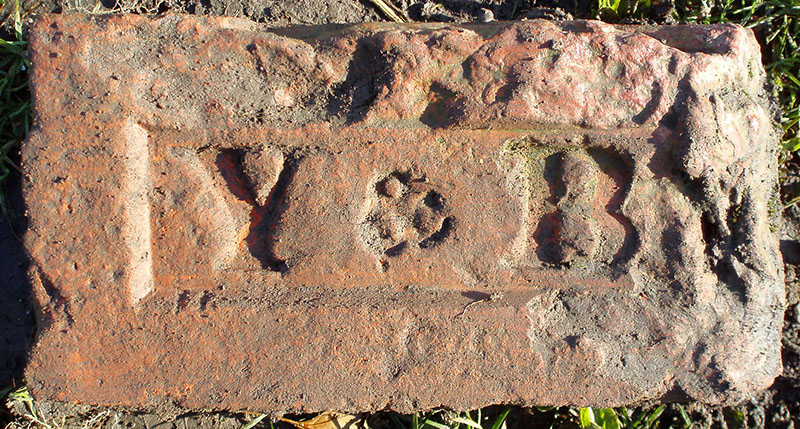
Photo by courtesy of the Frank Lawson collection. Obviously a very old example, found in York.
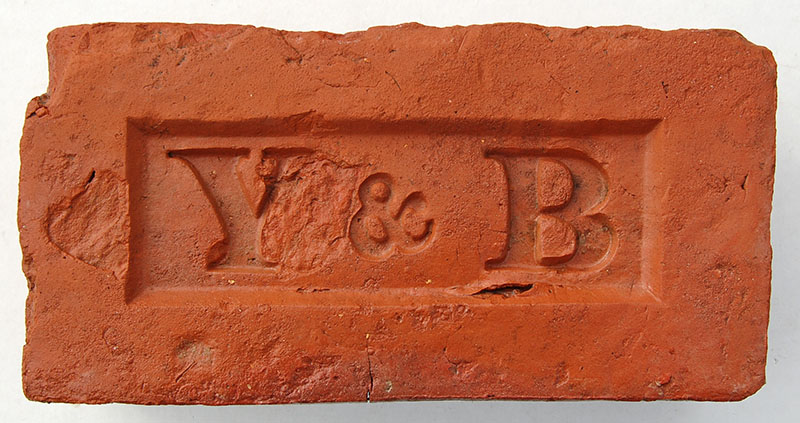
Young & Co of Dringhouses, York is listed as brickmakers in 1861 while William Biscombe is listed as a brickmaker at The Moor, Dringhouses in Kelly 1881. Young and Biscomb are noted in the York newspapers as working in partnership as builders from 1852 to 1861. Subsequent to this Biscomb(e) continued as a builder on his own account. Image PRBCO.